[ Skip to content ] [ Skip to main navigation ] [ Skip to quick links ] [ Go to accessibility information ]
Learning resources

Use art to inspire poetry and creative writing
KS3 (ENG) , KS4 (ENG) , KS3 (NI) , KS4 (NI) , CfE L4 (SCO) , CfE L3 (SCO) , KS3 (WAL) , KS4 (WAL) , KS5 (ENG) , KS5 (NI) , CfE Sen. (SCO) , KS5 (WAL)
Cubism , Pre‐Raphaelitism , Post‐Impressionism , Figurative art , Abstraction
Reading and writing , Literature , Self portraits
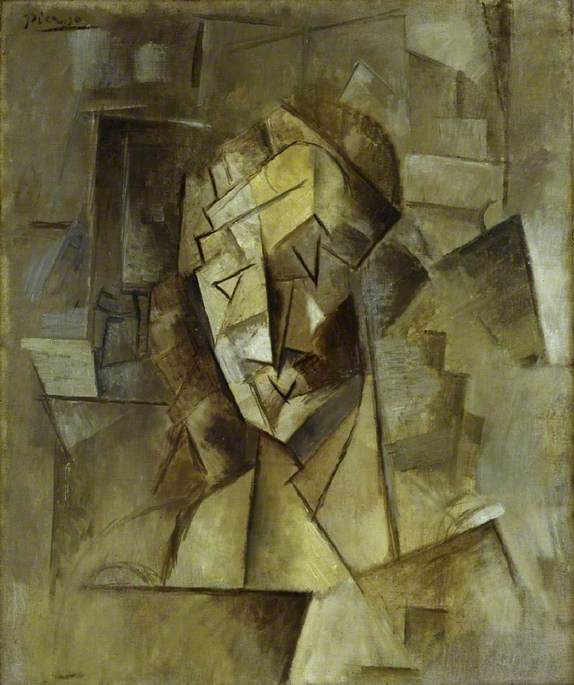
Cubist Head (Portrait of Fernande) c.1909/1910
Pablo Picasso (1881–1973)
About this resource
How can we use art for creative writing inspiration?
This resource suggests ideas for using artworks as the starting point or inspiration for a poetry or creative writing project.
Use it to explore:
- poets and poetry inspired by art
- artworks on Art UK to use as a starting point for creative writing projects
- suggestions for looking closely at an artwork
- ideas for planning a creative written response to an artwork
The resource offers opportunities for cross-curricular study across English and Art & Design. The examples of artworks, related poems and activity ideas included in the resource can be used together as a lesson plan or as individual components to integrate into your own scheme of work. The resource is devised for KS 3/CfE Level 3 & Level 4 students but could also be suitable for Key Stage 4 and CfE senior phase students and 16+ learners.
See also our related resource: How can poetry be used to inspire art?
Curriculum links
Art and design
- Evaluate and analyse creative works - Actively engage in the creative process of art - Know about great artists and understand the historical and cultural development of their art forms
Reading Pupils should be taught to:
read and appreciate the depth and power of the English literary heritage through:
- reading a wide range of high-quality, challenging, classic literature. The range should include works from the 19th, 20th and 21st centuries; poetry since 1789.
understand and critically evaluate texts through:
- reading in different ways for different purposes, summarising and synthesising ideas and information, and evaluating their usefulness for particular purposes - drawing on knowledge of the purpose, audience for and context of the writing, including its social, historical and cultural context and the literary tradition to which it belongs, to inform evaluation - identifying and interpreting themes, ideas and information - seeking evidence in the text to support a point of view, including justifying inferences with evidence - distinguishing between statements that are supported by evidence and those that are not, and identifying bias and misuse of evidence - analysing a writer’s choice of vocabulary, form, grammatical and structural features, and evaluating their effectiveness and impact - make an informed personal response, recognising that other responses to a text are possible and evaluating these.
Pupils should be taught to:
write accurately, fluently, effectively and at length for pleasure and information through:
- adapting their writing for a wide range of purposes and audiences - selecting, and using judiciously, vocabulary, grammar, form, and structural and organisational features, including rhetorical devices, to reflect audience, purpose and context, and using Standard English where appropriate - make notes, draft and write, including using information provided by others [e.g. writing a letter from key points provided; drawing on and using information from a presentation]
Grammar and vocabulary
consolidate and build on their knowledge of grammar and vocabulary through:
- studying their effectiveness and impact in the texts they read - drawing on new vocabulary and grammatical constructions from their reading and listening, and using these consciously in their writing and speech to achieve particular effects - analysing some of the differences between spoken and written language, including differences associated with formal and informal registers, and between Standard English and other varieties of English - using linguistic and literary terminology accurately and confidently in discussing reading, writing and spoken language.
KS 4 - Develop ideas through investigations, demonstrating a critical understanding of sources - Record ideas, observations and insights relevant to intentions as work progresses - Present a personal and meaningful response that realises intentions and demonstrates an understanding of visual language
English literature
Students should be able to:
- read and understand poetry - respond to poems critically and imaginatively - select and evaluate relevant textual material - use details from poems to illustrate interpretations - explain and evaluate the ways in which the poets express meaning and achieve effects - relate the poems to their social, cultural and historical contexts English Language Writing for purpose and audience Students should be able to: - write accurately and effectively - use an appropriate writing form - express ideas and/or information precisely and accurately - select vocabulary to persuade and/or inform the reader - use accurate grammar, spelling and punctuation Speaking and listening Students should be able to: - communicate clearly and effectively - present information and ideas - use standard English as appropriate - structure and sustain talk - choose and adapt language appropriate to an audience - respond appropriately to questions and views of others - interact with others - make a range of effective contributions - express ideas clearly, accurately and appropriately - listen and respond to others' ideas and perspectives - challenge what they hear where appropriate and shape meaning through asking questions and making comments and suggestions
Studying spoken and written language
Students should be able to: - understand the characteristics of spoken language - understand influences on spoken language choices - explore the impact of spoken language choices - understand how language varies in different contexts; - read and understand texts - understand how meaning is constructed - recognise the effect of language choices and patterns - evaluate how texts may be interpreted differently depending on the reader's perspective - explain and evaluate how writers use linguistic and presentational features to sustain the reader's interest Personal creative writing
Students should be able to: - write clearly and fluently (as well as imaginatively, if appropriate) - organise ideas to support coherence - use an appropriate writing form - select vocabulary appropriate to the task to engage the reader - use a range of sentence structures for effect - use accurate grammar, spelling and punctuation Reading Literary and Non-fiction Texts Students should be able to: - read and understand texts - understand how meaning is constructed - recognise the effect of language choices and patterns - select material appropriate to purpose - evaluate how texts may be interpreted differently depending on the reader's perspective - explain and evaluate how writers use linguistic and presentational features to sustain the reader's interest.
Level 4 - I can analyse art and design techniques, processes and concepts, make informed judgements and express considered opinions on my own and others' work (EXA 4-07a)
Literacy and English
Listening and talking
- When I engage with others I can make a relevant contribution, ensure that everyone has an opportunity to contribute and encourage them to take account of others’ points of view or alternative solutions. I can respond in ways appropriate to my role, exploring and expanding on contributions to reflect on, clarify or adapt thinking (LIT 4-02a) - As I listen or watch, I can clearly state the purpose and main concerns of a text and make inferences from key statements; compare and contrast different types of text; gather, link and use information from different sources and use this for different purposes (LIT 4-04a) - As I listen or watch, I can make notes and organise these to develop thinking, help retain and recall information, explore issues and create new texts, using my own words as appropriate (LIT 3-05a / LIT 4-05a) - I can show my understanding of what I listen to or watch by giving detailed, evaluative comments, with evidence, about the content and form of short and extended texts (LIT 4-07a) - When listening and talking with others for different purposes, I can: communicate detailed information, ideas or opinions; explain processes, concepts or ideas with some relevant supporting detail; sum up ideas, issues, findings or conclusions (LIT 4-09a)
- Through developing my knowledge of context clues, punctuation, grammar and layout, I can read unfamiliar texts with increasing fluency, understanding and expression (ENG 2-12a / ENG 3-12a / ENG 4-12a) - I can make notes and organise them to develop my thinking, help retain and recall information, explore issues and create new texts, using my own words as appropriate (LIT 3-15a / LIT 4-15a) - To show my understanding, I can give detailed, evaluative comments, with evidence, on the content and form of short and extended texts, and respond to different kinds of questions and other types of close reading tasks (ENG 4-17a) - I can: discuss and evaluate the effectiveness of structure, characterisation and/or setting using some supporting evidence; identify how the writer’s main theme or central concerns are revealed and can recognise how they relate to my own and others’ experiences; identify and make a personal evaluation of the effect of aspects of the writer’s style and other features appropriate to genre using some relevant evidence and terminology (ENG 4-19a)
- I enjoy creating texts of my choice and I am developing my own style. I can regularly select subject, purpose, format and resources to suit the needs of my audience (LIT 3-20a / LIT 4-20a) - As appropriate to my purpose and type of text, I can punctuate and structure different types of sentences with sufficient accuracy, and arrange these to make meaning clear, showing straightforward relationships between paragraphs (LIT 3-22a / LIT 4-22a) - Throughout the writing process, I can review and edit my writing independently to ensure that it meets its purpose and communicates meaning clearly at first reading (LIT 4-23a) - I can justify my choice and use of layout and presentation in terms of the intended impact on my reader (LIT 4-24a) - I can use notes and other types of writing to generate and develop ideas, retain and recall information, explore problems, make decisions, or create original text. I can make appropriate and responsible use of sources and acknowledge these appropriately (LIT 4-25a) - By considering the type of text I am creating, I can independently select ideas and relevant information for different purposes, and organise essential information or ideas and any supporting detail in a logical order. I can use suitable vocabulary to communicate effectively with my audience (LIT 3-26a / LIT 4-26a) - I can engage and/or influence readers through my use of language, style and tone as appropriate to genre (ENG 3-27a / ENG 4-27a) - I can create a convincing impression of my personal experience and reflect on my response to the changing circumstances to engage my reader (ENG 4-30a) - Having explored and experimented with the narrative structures which writers use to create texts in different genres, I can: use the conventions of my chosen genre successfully and/or; create an appropriate mood or atmosphere and/or; create convincing relationships, actions and dialogue for my characters (ENG 4-31a)
Art and design - Students use their knowledge about the work of other artists to enrich and inform their work through analysis and evaluation - Students evaluate their work through discussion
Learners should be given opportunities to:
- respond orally to continuous and non-continuous texts - respond orally to a variety of stimuli and ideas, including written and dynamic texts, e.g. paintings, music, film, still and moving images - communicate for a range of purposes, e.g. recount and present information, instruct, argue and explain a point of view, discuss an issue, persuade, question and explore interpretations, convey feelings - speak and listen individually, in pairs, in groups and as members of a class - present, talk and perform in formal and informal contexts and for a variety of audiences including teachers and peers - engage in activities that focus on words, their derivation, meanings, choice and impact - listen and view attentively, responding to a wide range of communication, e.g. written and dynamic texts, theatre and poetry performance, visiting speakers, explanations, instructions - speak clearly, using intonation and emphasis appropriately, e.g. recitation, oral storytelling - use appropriate vocabulary suitable for the situation or purpose - use appropriate vocabulary and terminology to discuss, consider and evaluate their own work and that of others, e.g. authors, peers
read a wide range of continuous and non-continuous texts, in printed and dynamic format, as a basis for oral and written responses. These should include:
– extracts and complete texts – traditional and contemporary poetry and prose – texts written by Welsh authors, texts with a Welsh dimension and texts from other cultures – texts that have challenging subject matter, which broaden perspectives and extend thinking – texts with a variety of structures, forms, purposes, intended audiences and presentational devices – texts that demonstrate quality and variety in language use – texts with a variety of social, historical and cultural contexts – texts that extend learners’ intellectual, moral and emotional understanding – texts with a variety of tone, e.g. irony, parody, word play, innuendo and satire
read individually and collaboratively, e.g. paired reading, guided group reading, shared reading
read for different purposes, e.g. for personal pleasure; to retrieve, summarise and synthesise key information; to interpret and integrate information; to verify information; to deepen understanding through re-reading; to identify language devices used by the writer to analyse purpose; to identify alternative readings of a text
develop appropriate vocabulary and terminology to discuss, consider and evaluate their own work and that of others, e.g. authors, poets, peers, in written and dynamic texts.
write for a variety of purposes, including to: – recount – inform – explain – argue/persuade – discuss/analyse – evaluate – narrate – describe – empathise
write in a range of continuous and non-continuous texts in a variety of forms
produce poetic writing, using imagery and poetic devices, e.g. rhyme and form
use a wide range of written and dynamic stimuli, e.g. stories, picture books, images, poems, experiences, film, paintings, music
use appropriate vocabulary and terminology to discuss, consider and evaluate their own work and that of others, e.g. authors, peers.
Expressive Arts
Exploring the expressive arts is essential to developing artistic skills and knowledge and it enables learners to become curious and creative individuals.
Progression step 5:
- I can investigate and analyse how creative work is used to represent and celebrate personal, social and cultural identities.
- I can independently research the purpose and meaning of a wide range of creative work and consider how they can impact on different audiences.
Responding and reflecting, both as artist and audience, is a fundamental part of learning in the expressive arts.
- I can critically and thoughtfully respond to and analyse the opinion and creative influences of others in order to independently shape and develop my own creative work.
- I can purposefully apply knowledge and understanding of context when evaluating my own creative work and creative work by other people and from other places and times.
- I can critically evaluate the way artists use discipline-specific skills and techniques to create and communicate ideas.
Languages, literacy and communication
Understanding languages is key to understanding the world around us
- I can listen empathetically, respecting different people’s perspectives and can critically evaluate them to arrive at my own considered conclusions.
- I can employ a range of strategies to recognise and predict the meaning across a wide range of texts and from this enhance my own expression and communication.
- I can use inference and deduction to gain in-depth understanding of complex texts, and can evaluate the reliability, validity and impact of what I read.
- I can use my knowledge of word construction, grammar , including syntax , and text organisation to support my understanding of what I hear and read.
- I can read empathetically to respect and critically evaluate different people’s perspectives, using them to arrive at my own considered conclusions.
- I can listen and read to build an extensive range of general and specific vocabulary, and I can use them with precision in different contexts.
Expressing ourselves through languages is key to communication
- I can convey meaning convincingly in a range of contexts so that the audience is fully engaged.
- I can make informed choices about vocabulary and grammar to enhance my communication skills
- I can reflect critically on my use of language and can consider the effects of my spoken, written and visual communication objectively.
- I can evaluate and respond critically to what I have heard, read or seen.
Literature fires imagination and inspires creativity
- I can engage with a wide range of literary genres in depth in order to explore and craft my own work.
- I can experiment with and craft my own literature.
- I can critically evaluate key concepts and the impact of language choices and techniques on the reader/viewer using an assured selection of relevant textual detail.
- I can appreciate literature, showing empathy when evaluating different interpretations of literature, including my own.
How to use this resource
1. Explore paintings and poetry
The first section of this resource introduces poems inspired by portraits, narrative paintings and abstract artworks.
Choose one or two of the paintings with accompanying poems to explore with your students. Look at the painting first, encouraging students to discuss what it shows and their response to it.

Dante Gabriel Rossetti (1828–1882) 1853
William Holman Hunt (1827–1910)
You could think about:
- what does the artwork look like?
- is it an abstract arrangement of shapes and colours or has the artist represented something from the visible world?
- is there a story, meaning or message in the work?
- what is the mood of the work and how does this affect your response?
- how has the artist used techniques such as brushstrokes or chisel marks? What colours have they used?
Then discuss how the poet has responded to the painting.
- What aspects of the painting have they focused on?
- What type of language have they used?
- Have they used the painting as a starting point to discuss bigger ideas or themes or to reflect upon issues that are personal to them?
2. Activity ideas and suggestions
The second section of the resource includes ideas and suggestions for responding through poetry or another form of creative writing to an artwork.
Did you know?
There is a dedicated term for poems inspired by artworks. Ekphrastic poetry is taken from the Greek word Ekphrasis , meaning to describe something in vivid detail.
Elizabeth Jennings and Rembrandt's late self-portraits
Rembrandt van Rijn was a seventeenth-century Dutch painter. During his long career, he painted over 90 self-portraits that record how he looked from youth to old age. (See additional self-portraits on the Rembrandt artist page on Art UK and watch a video to find out more.)
Rembrandt's self-portraits from old age are brutally honest, showing melancholy eyes staring out from sagging features and dishevelled hair and clothing.
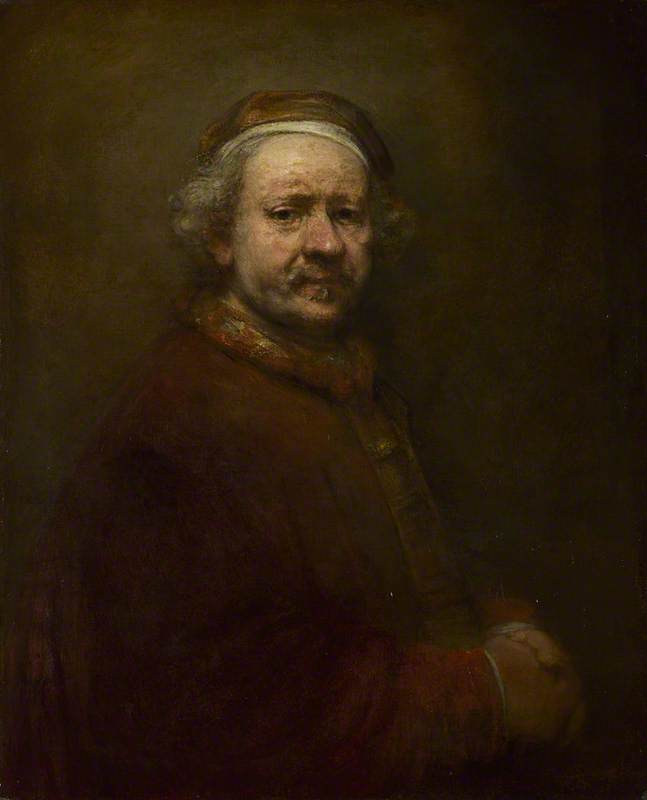
Self Portrait at the Age of 63 1669
Rembrandt van Rijn (1606–1669)
Poet Elizabeth Jennings responds to the self-portraits that Rembrandt painted in later life.
You are confronted with yourself. Each year The pouches fill, the skin is uglier. You give it all unflinchingly. You stare Into yourself, beyond. Your brush's care Runs with self-knowledge. Here
Is a humility at one with craft There is no arrogance. Pride is apart From this self-scrutiny.
Read the whole poem and listen to a recording of Elizabeth Jennings reading her poem
Explore an analysis of the poem
Raza Hussain and Holman Hunt's portrait of Dante Gabriel Rossetti (1828–1882)
In 2017, we challenged five young poets to create an original piece inspired by a painting of their choice from Art UK.
Birmingham-based spoken word artist and rapper Raza Hussain chose an 1853 portrait of Pre-Raphaelite artist Dante Gabriel Rossetti by William Holman Hunt .
Hussain sees the Pre-Raphaelites as rebels who wanted to implement change and Rossetti as 'an iconic and profound symbol of passionate creative madness – the kind to change perspectives – the kind to change the world'.
Find out more about the portrait and Raza Hussain's response to it .
Rowan MacCabe and Ethel Wright's 'Bonjour, Pierrot'
Rowan McCabe is another young poet commissioned to respond to a painting on Art UK as part of the Art Speaks challenge.
Bonjour, Pierrot is an imagined portrait, made in the early 1890s, of the character of Pierrot from French literature. Pierrot has held a fascination for many artists including Jean-Antoine Watteau and Pablo Picasso . The poet Rowan McCabe responds to this depiction of Pierrot by British portrait painter Ethel Wright and sees Pierrot in the painting as a sad figure, despite his clownish appearance.
McCabe has been affected by mental health issues and, for him, the painting is a reminder that people might seem silly and fun on the surface but can, in fact, be hiding issues relating to their mental health.
Find out more about the painting and Rowan McCabe's response to it
Explore more paintings by Ethel Wright
Narrative painting
A narrative painting is a painting that tells a story. The story could be from religion, literature, myth and legend or history. Or it could be a story of everyday life (often referred to as genre painting .)
Poetic responses to Titian's Diana and Actaeon
In 2012, The National Gallery in London invited 13 leading poets to respond to three paintings by Titian (c.1488–1576): Diana and Actaeon (1556–1559); The Death of Actaeon (about 1559–1575); and Diana and Callisto (1556–1559). The paintings depict stories from the epic poem Metamorphoses by the Classical poet Ovid , who lived from 43 BC to 17/18 AD.
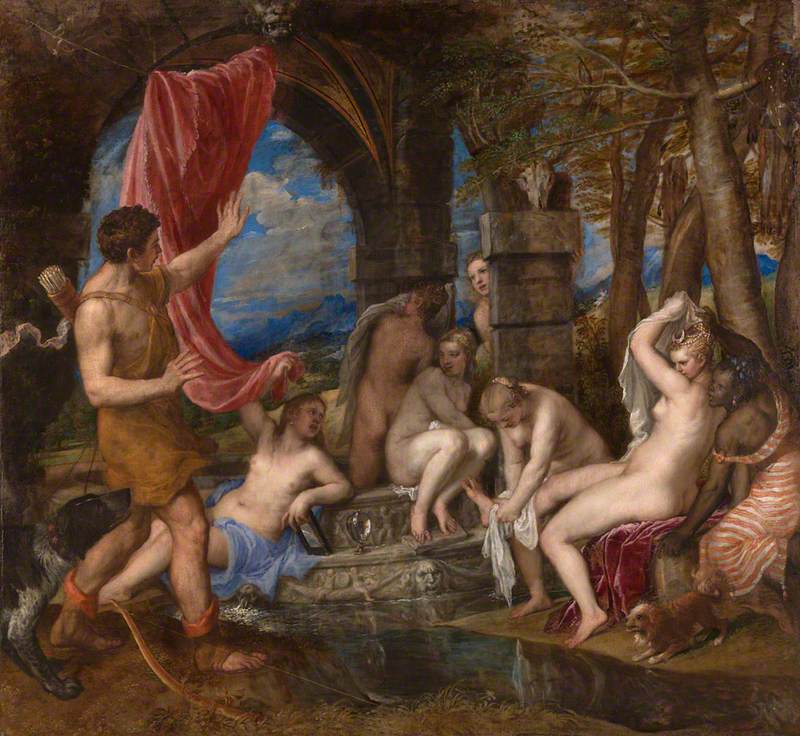
Diana and Actaeon 1556-1559
Titian (c.1488–1576)
The myth of Diana and Actaeon recounted in Metamorphoses tells the sad story of the hunter Actaeon who comes across Diana, the Roman goddess of hunting, while she is bathing with her escort of nymphs. The nymphs try to cover the naked Diana who, in a state of shock and embarrassment, splashes Actaeon. This splash turns Actaeon into a deer and he flees the scene. Tragically, however, his own hunting dogs don't recognise their master and attack and kill Actaeon.
Find out more about the paintings in the HENI Talks video on this artwork page
Patience Agbabi on Titian's 'Diana and Actaeon'
In this video poet Patience Agbabi reads her poem About Face inspired by Titian's painting Diana and Actaeon (1556–1559).
She imagines the thoughts and response of a Black nymph who is depicted standing beside Diana in the painting and helps to cover Diana from the gaze of Actaeon.
Hear more poets' responses to Titian's paintings on The National Gallery website
Sabrina Mahfouz and Ludolf Backhuysen's 'Boats in a Storm'
Ludolf Backhuysen 's painting, Boats in an Upcoming Storm with the Church of Zandvoort (1696) depicts a large sailing vessel, being buffeted by strong winds as it enters a harbour. Men on shore are pulling on a rope to steady her stern while other smaller boats come to the assistance of the distressed passengers.
British Egyptian poet Sabrina Mahfouz was drawn to the painting by its depiction of a storm, struck by the fact that something as still as a painting is able to capture such ferocious movement and activity.
Abstract art
E. E. Cummings and Cubism
American avant-garde poet E. E. Cummings was profoundly influenced by early twentieth-century art movements and the experiments with abstract style that Cubists and other modern artists were conducting. In 1913 he visited the International Exhibition of Modern Art in New York (also known as the Armory Show) where he saw work by artists including Pablo Picasso , Georges Braque , Henri Matisse , Paul Cézanne and Marcel Duchamp .
Pablo Picasso and Georges Braque's Cubist experiments revolutionised painting. In attempting to suggest the three-dimensionality of objects, landscapes and people by showing them simultaneously from different viewpoints they created fragmented, abstracted images.
E. E. Cummings was inspired by these fractured artworks and began to explore similar experimentation in his poetry. His poems became visual as well as verbal as he experimented with the form and arrangement of his words. (His poem r-p-o-p-h-e-s-s-a-g-r is a good example of this.)
Cummings begins his poem, Picasso , with the words:
'Picasso you give us Things which bulge: grunting lungs pumped full of thick sharp mind you make us shrill presents always shut in the sumptuous screech of simplicity'
The poem ends with:
'you hew form truly'
Read the full poem here
Anne Sexton and Vincent van Gogh's The Starry Night
Artist Vincent van Gogh is best known for his powerful portraits, flowers and landscapes painted using bold colours and loose brushstrokes that seem to whirl around the surface of his canvases.
The Starry Night, painted in 1889, shows the view from Van Gogh's room in the Saint-Paul-de-Mausole asylum where he was placed after a breakdown (during which he self-mutilated his ear). The view was painted just before sunrise and as well as the trees and hills and starry sky that he could see, Van Gogh added an imaginary village to the landscape.

The Starry Night
1889, oil on canvas by Vincent van Gogh (1853–1890)
In her response to The Starry Night, poet Anne Sexton has managed to convey the powerful emotions as well as the loose abstracted style of Vincent van Gogh's painting.
'The town does not exist except where one black-haired tree slips up like a drowned woman into the hot sky The town is silent. The night boils with eleven stars. Oh starry starry night!'
Ann Sexton researched Van Gogh and read his letters before writing the poem and includes, as an epigraph to her poem, a line from a letter that Vincent van Gogh wrote to his brother.
'That does not keep me from having a terrible need of – shall I say the word – religion. Then I go out at night to paint the stars.'
In creating her response to the painting she imagines Vincent van Gogh thinking about religion and mortality.
Read the full poem here
See an analysis of the poem
Activity: write a poem inspired by an artwork
Now that you have explored a range of poems inspired by paintings, have a go at writing a poem or piece of creative writing inspired by an artwork.
This activity includes tips and suggestions for finding, looking at and creating a written response to an artwork.
Step 1: find an artwork to inspire you
If you are a teacher, task students with finding an artwork that inspires them as a homework project in advance of the class. They could choose an artwork from a local collection or find one on Art UK.
Use the tips below to find artworks on Art UK.
Search by artist
Look for an artist on Art UK. Start typing the artist's name into the search box on the Art UK artworks search page .
A list of artists will appear. Select the artist that you are interested in.

Screenshot of Art UK's artwork search page
You will be shown a list of artworks on Art UK by your selected artist. Browse these and choose an artwork to inspire your creative writing project.
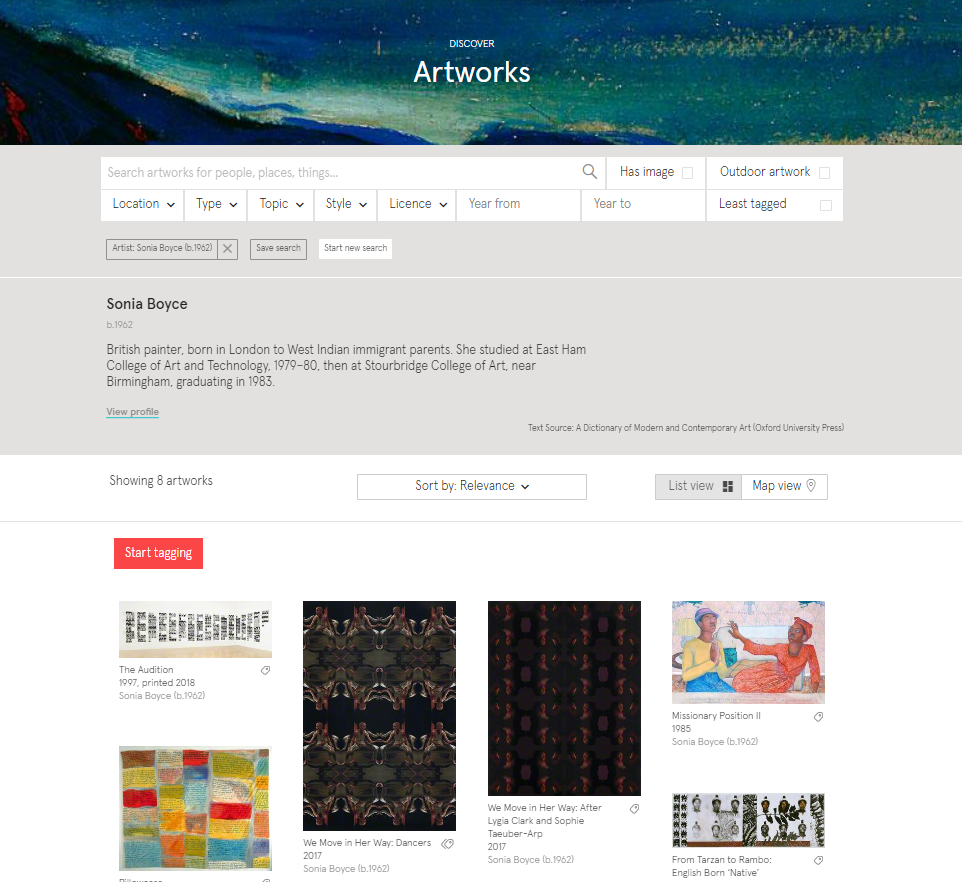
Screenshot of Art UK's artworks search page, showing art by Sonia Boyce
- Go to the artworks search page to search by artist
Search by theme
You can also type a subject or theme into the search box. This could be anything from 'holiday' to 'celebrity' to 'football'. Once you've typed your theme, click the search icon or press return.
You will be shown a list of artworks relating to the keyword.
- Go to the artworks search page to search by theme
Another way to search by theme is to explore Topics on Art UK. We have gathered together a selection of artworks related to a wide range of themes from 'home and family' to the 'natural world'.
- Browse Topics
Search by location
If you'd like to find artworks in museums or galleries near you, use our venue search.
This will allow you to search by UK country and region to find a local gallery or museum and see the artworks that they hold.
- Search by country, region and venue
Be inspired using the artwork shuffle
If you are not sure what you're looking for (but will know when you see it!), use our artwork shuffle.
The artwork shuffle shows a random selection of artworks in different media from collections around the country.
If you don't see anything you like, shuffle again to see another selection.
- Inspire me with the artwork shuffle
Step 2: look closely at your artwork
Once you have found an artwork to inspire you, look closely at it. Note down your thoughts about the work and your feelings in response to it.
- What does the artwork look like?
- Is it an abstract arrangement of shapes and colours or has the artist represented something from the visible world?
- Is there a story, meaning or message in the work?
- What is the mood of the work and how does it affect your response?
- How has the artist used techniques such as brush strokes or chisel marks? What colours have they used?
In this video, created by The Grampian Hospitals Art Trust , writer Shane Strachan shares some useful ideas for looking closely at an artwork.
Step 3: plan and write your creative response
How are you going to respond to the artwork in your creative writing piece?
Your response could be a poem, a text, a memory or a form of your own invention. As well as what you see in the artwork (the imagery, colours and mark-making or use of materials) think about your own interpretation and your response to it.
- What does the artwork make you feel?
- Does it make you think of other things such as memories, places or people?
- Does the artwork tell or suggest a narrative or story?
- Are there any details or imagery within the artwork that draws you in?
- What do the colours, shapes and marks remind you of?
Research and be inspired by others
You could also research the artwork to inform and inspire your approach. Find out more about the artist and their ideas and techniques or research the subject depicted.
Be inspired by the approach of other writers. Revisit the poetry included in the first part of this resource.
Or read creative responses to artworks written by young people for our Write on Art competition.
- Write on Art: Ruby Langan-Hughes on The Broken Mirror by Jean-Baptiste Greuze
- Write on Art: Variaam Tratt on Preserve 'Beauty ' by Anya Gallaccio
- Write on Art: Aoife Hogan on Childen and Chalk Wall 3 by Joan Eardley
Writing art: inspiration and tips
In this second video from Grampian Hospitals Art Trust , writer Shane Strachan shares ideas and tips for responding to an artwork creatively in writing. He also shares his own poems inspired by artworks.
Watch the video and then get started on your own creative writing project!
Find out more
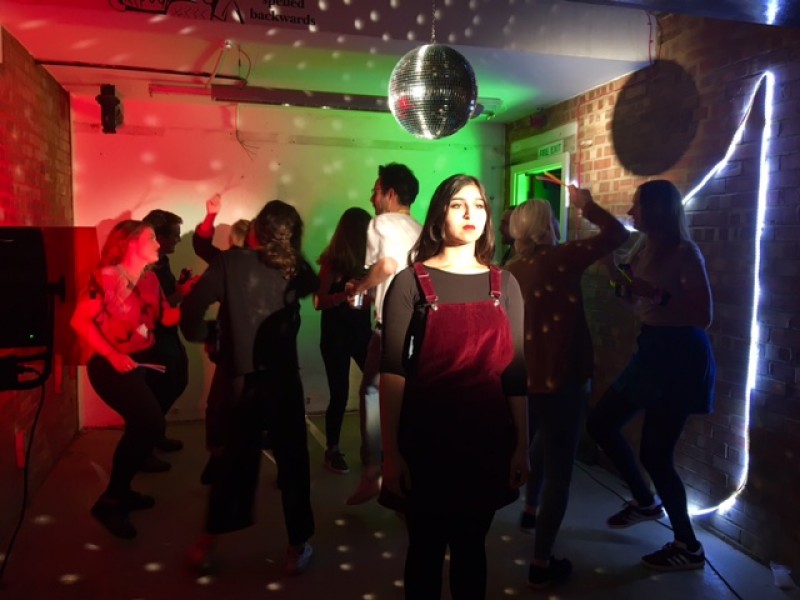
Do you know someone who would love this resource? Tell them about it...
More cubism resources.
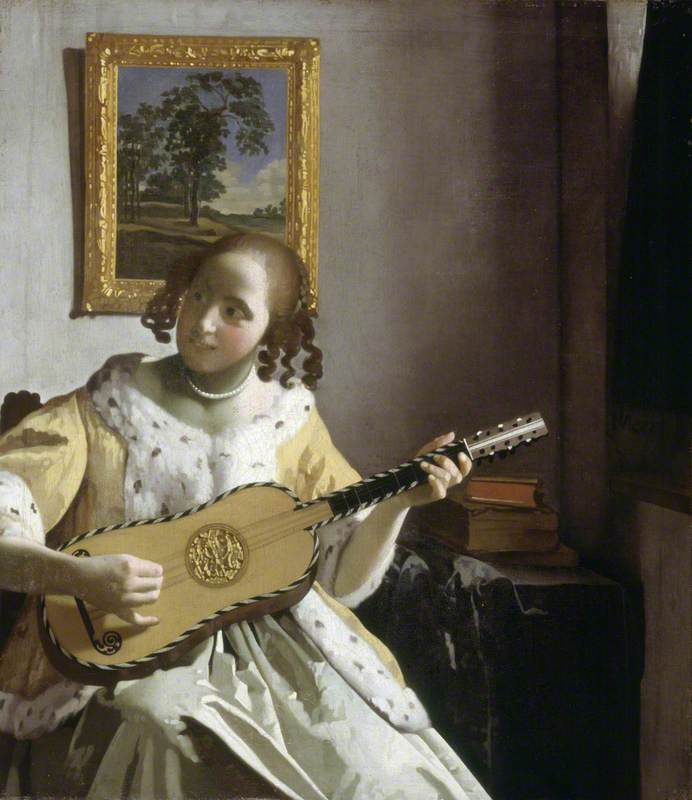
- KS1 (ENG) KS2 (ENG) KS1 (NI) KS2 (NI) CfE L1 (SCO) CfE L2 (SCO) PS2 (WAL) PS3 (WAL)
More Reading and writing resources
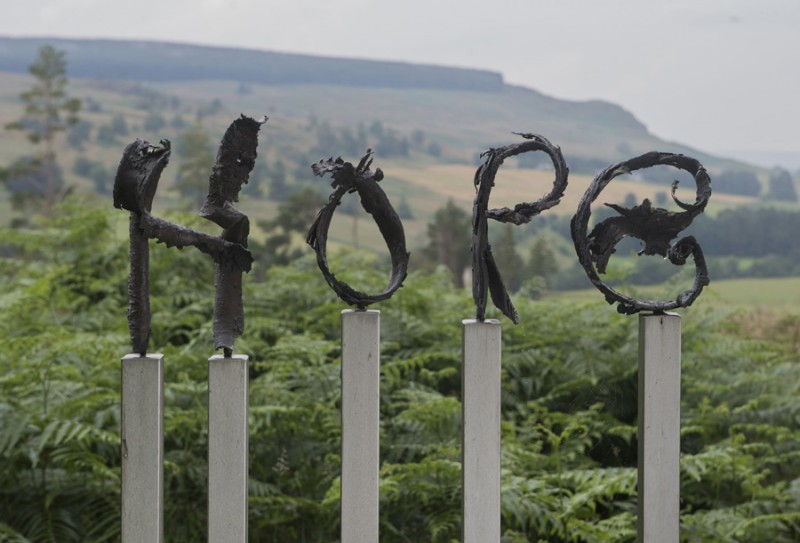
- KS3 (ENG) KS3 (NI) CfE L4 (SCO) CfE L3 (SCO) KS3 (WAL)
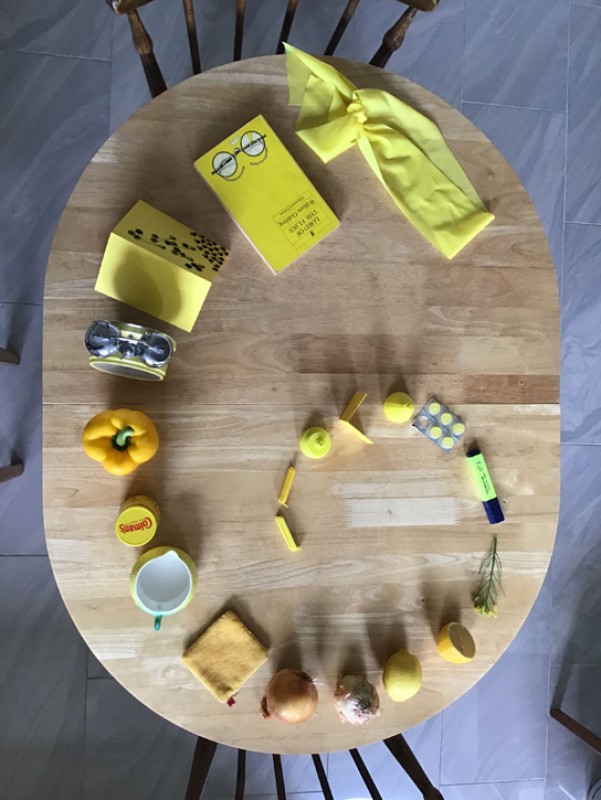
- KS2 (ENG) KS2 (NI) CfE L2 (SCO) PS3 (WAL)
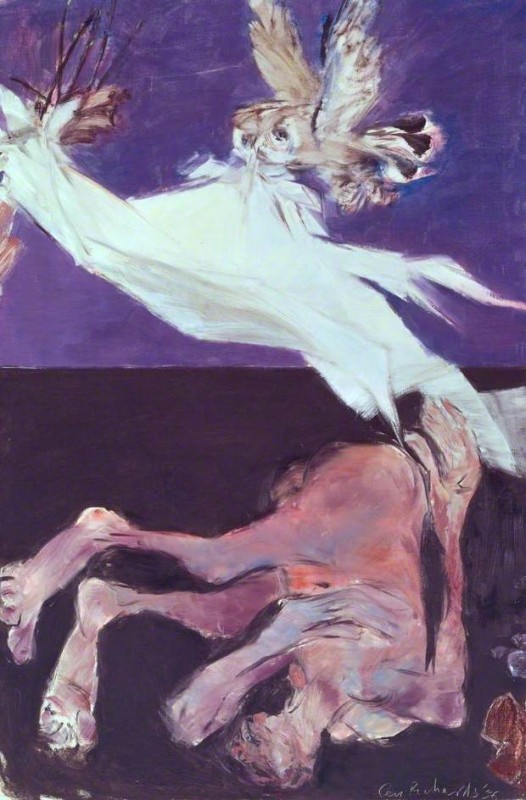
- KS4 (ENG) KS4 (NI) CfE L4 (SCO) KS4 (WAL) KS5 (ENG) KS5 (NI) CfE Sen. (SCO) KS5 (WAL)

- KS2 (ENG) KS2 (NI) CfE L2 (SCO) PS3 (WAL) KS3 (ENG) KS4 (ENG) KS3 (NI) KS4 (NI) CfE L4 (SCO) CfE L3 (SCO) KS3 (WAL) KS4 (WAL) KS5 (ENG) KS5 (NI) CfE Sen. (SCO) KS5 (WAL)
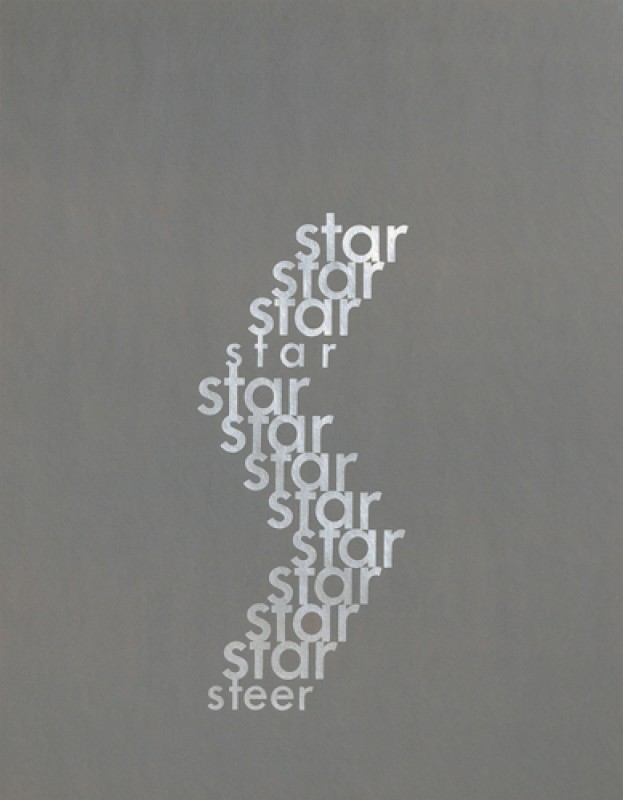
- KS2 (ENG) KS2 (NI) CfE L2 (SCO) PS3 (WAL) KS3 (ENG) KS3 (NI) CfE L3 (SCO) KS3 (WAL)

- KS1 (ENG) KS2 (ENG) KS1 (NI) KS2 (NI) CfE L1 (SCO) CfE L2 (SCO) PS2 (WAL) PS3 (WAL) KS3 (ENG) KS4 (ENG) KS3 (NI) KS4 (NI) CfE L4 (SCO) CfE L3 (SCO) KS3 (WAL) KS4 (WAL)
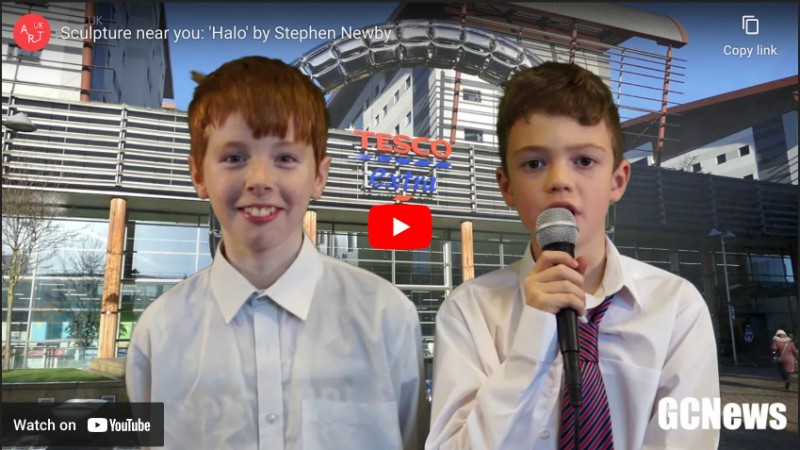
More Art UK resources
- Our Mission
Inspire Thoughtful Creative Writing Through Art
A few years ago, I showed my sixth graders The Gulf Stream by Winslow Homer. It's an epic painting of a young black sailor in a small broken boat, surrounded by flailing sharks, huge swells, and a massive storm in the distance. I asked my students the simple question, "What's happening?" The responses ranged from "He's a slave trying to escape" to "He's a fisherman lost at sea." The common theme with the responses, though, was the tone -- most students were very concerned for his welfare. "That boat looks rickety. I think he’s going to get eaten by the sharks," was a common refrain. Then a very quiet, shy girl raised her hand. "It's OK, he'll be fine," she said. "The ship will save him."
The room got quiet as everyone stared intently at the painting. I looked closely at it. "What ship?" I responded. The young girl walked up to the image and pointed to the top left corner. Sure enough, faded in the smoky distance was a ship.
This revelation changed the tone and content of the conversation that followed. Some thought it was the ship that would save him. Others thought it was the ship that cast him off to his death. Would the storm, sharks, or ship get him? The best part of this intense debate was hearing the divergent, creative responses. Some students even argued. The written story produced as a result of analyzing this image was powerful.
Since this experience, I have developed strategies that harness the power of observation, analysis, and writing through my art lessons.
Children naturally connect thoughts, words, and images long before they master the skill of writing. This act of capturing meaning in multiple symbol systems and then vacillating from one medium to another is called transmediation . While using art in the classroom, students transfer this visual content, and then add new ideas and information from their personal experiences to create newly invented narratives. Using this three-step process of observe, interpret, and create helps kids generate ideas, organize thoughts, and communicate effectively.
Step 1: Observe
Asking students to look carefully and observe the image is fundamental to deep, thoughtful writing. Keep this in mind when choosing art to use in class. Look for images with:
- Many details: If it is a simple image, there's not much to analyze.
- Characters: There should be people or animals in the image to write about.
- Colors: Find colors that convey a mood.
- Spatial relationships: How do the background and foreground relate?
Lead your students through the image. "I like it" is not the answer we are looking for. Ask questions that guide the conversation. Encourage divergent answers and challenge them. Try these questions:
- What shapes do you see? Do they remind you of anything?
- What colors do you see? How do those colors make you feel?
- What patterns do you see? How are they made?
- Do you see any unusual textures? What do they represent?
- What is the focal point of the image? How did the artist bring your attention to the focal point?
- How did the artist create the illusion of space in the image?
- If you were living in the picture and could look all around you, what would you see?
- If you were living in the picture, what would you smell? What would you hear?
Keep your questions open-ended, and record what students say so that they'll have a reference for later. Identify and challenge assumptions. At this point, we are not looking for inferences or judgments, just observations.
Step 2: Make Inferences by Analyzing Art
Once they have discussed what they see, students then answer the question, "What is happening?" They must infer their answers from the image and give specific reasons for their interpretations.
For example, while looking at The Gulf Stream , one student said, "The storm already passed and is on its way out. You can tell because the small boat the man is on has been ripped apart and the mast is broken." That is what we are looking for in their answers: rational thoughts based on inferences from data in the picture. No two responses will be exactly the same, but they can all be correct as long as the student can coherently defend his or her answer with details from the image. When children express their opinions based on logic and these details, they are analyzing art and using critical thinking skills.
Here are some tips to model a mature conversation about art:
- Give adequate wait time. We are often so rushed that we don't give children time to think and reflect.
- Ask students to listen to, think about, and react to the ideas of others.
- Your questions should be short and to the point.
- Highlight specific details to look at while analyzing art (characters, facial expressions, objects, time of day, weather, colors, etc.).
- Explain literal vs. symbolic meaning (a spider's web can be just that, or it can symbolize a trap).
Step 3: Create
After thoughtful observation and discussion, students are abuzz with ideas. For all of the following writing activities, they must use details from the image to support their ideas. Here are just a few of the many ways we can react to art:
For Younger Students:
- Locate and describe shapes and patterns.
- Describe time of day and mood of scene.
- Describe a character in detail with a character sketch. Characters may be people, animals, or inanimate objects.
- Write a story based on this image including a brand new character.
- Give students specific vocabulary that they must incorporate into their story.
For Older Students:
- Write down the possible meaning of the image, trade with a partner, and persuade your partner to believe that your story is the correct one based on details in the image.
- Identify characters and their motives. Who are they and what do they want? Explain how you know based on details.
- Pretend that you are in the image, and describe what you see, smell, feel, and hear.
- Describe the details that are just outside of the image, the ones we can’t see.
- Introduce dialogue into your story. What are they saying?
- Sequence the events of the story. What happened five minutes before this scene, what is happening now, and what happens five minutes later? How do you know?
- Write from the perspective of one of the characters in the image.
- Explain who is the protagonist and antagonist. What is their conflict?
Thinking and Communicating
We don’t know what the future holds for our students, but we do know that they will have to think critically, make connections, and communicate clearly. Art can help students do that. During this year's commencement speech at Sarah Lawrence College, Fareed Zakaria said, "It is the act of writing that forces me to think through them [ideas] and sort them out." Art can be that link to helping students organize their ideas and produce coherent, thoughtful writing.
As you consider teaching writing through art, I recommend reading In Pictures and in Words by Kate Wood Ray and Beth Olshansky's PictureWriting.org website.
How have you used the arts to inspire creative thinking in your students? Please tell us about it in the comments.
6 Amazing Art Projects That Incorporate Writing

An 8th-grade student walks into a classroom and sits down at a desk. With a freshly-sharpened pencil, the student is preparing to take the state writing assessment. As part of this assessment, the student will be expected to complete a descriptive essay in 90 minutes. This is the writing prompt: “Describe one activity you enjoy.” If you’ve ever had a conversation with an 8th-grader, you know they’d be able to sum their answer up in one sentence! Yet, they are expected to compile a detailed, descriptive essay about a vague topic.
So what does art have to do with state writing assessments? Well, we often teach our students that art tells a story and contains meaning . Art can be viewed as its own visual language. Sometimes a student just needs a really good idea to have something worthwhile to write about. Art can be that good idea to inspire writing!
Today I am going to share 6 art projects that incorporate writing and turn your students’ imagery into a written story.
1. bleezer’s ice cream.

2. Smashing Faces

3. Emotional Weaving

To start this project have your students select an emotion. Then, using the 5 senses, challenge your students to create a written description of that emotion. For example, what does anger look like? What does it feel like? What noises would you associate with anger?
Students will then use their written descriptions as a jumping off point for a piece of art as they depict their emotion through the use of color and line. Finally, students will use that piece of art to create a paper weaving. To take the project even further, you might want to try weaving together two different emotions!
4. Abandoned Cars
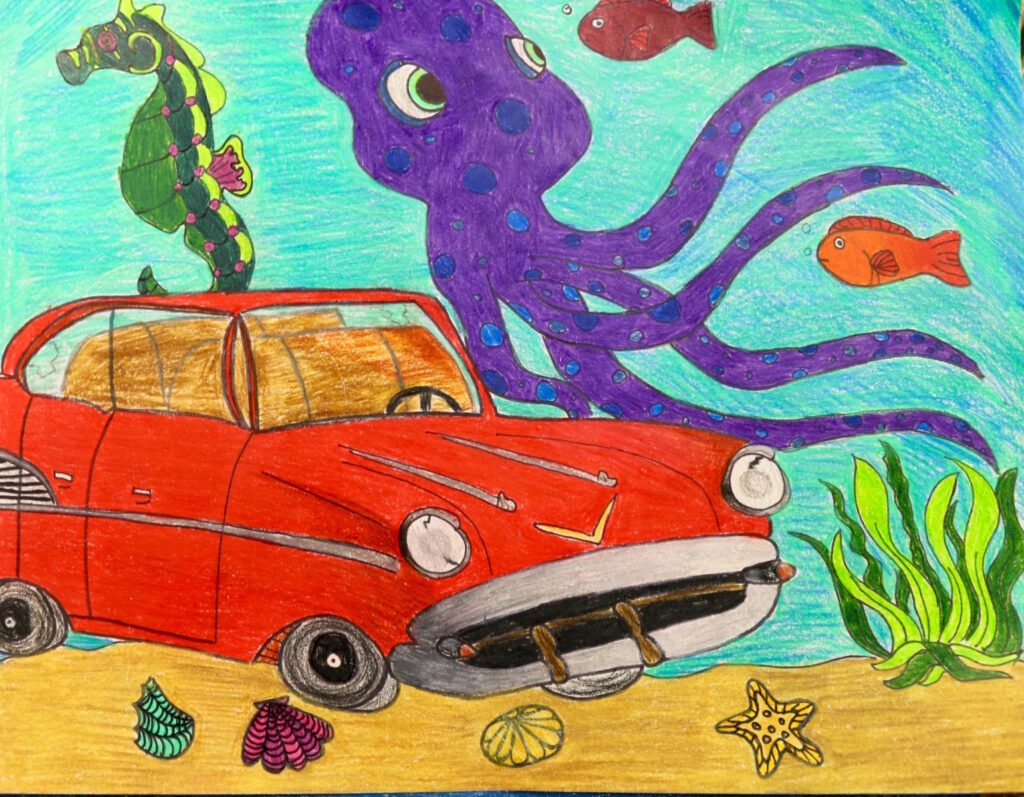
5. Blackout Poetry

6. Fan Fiction
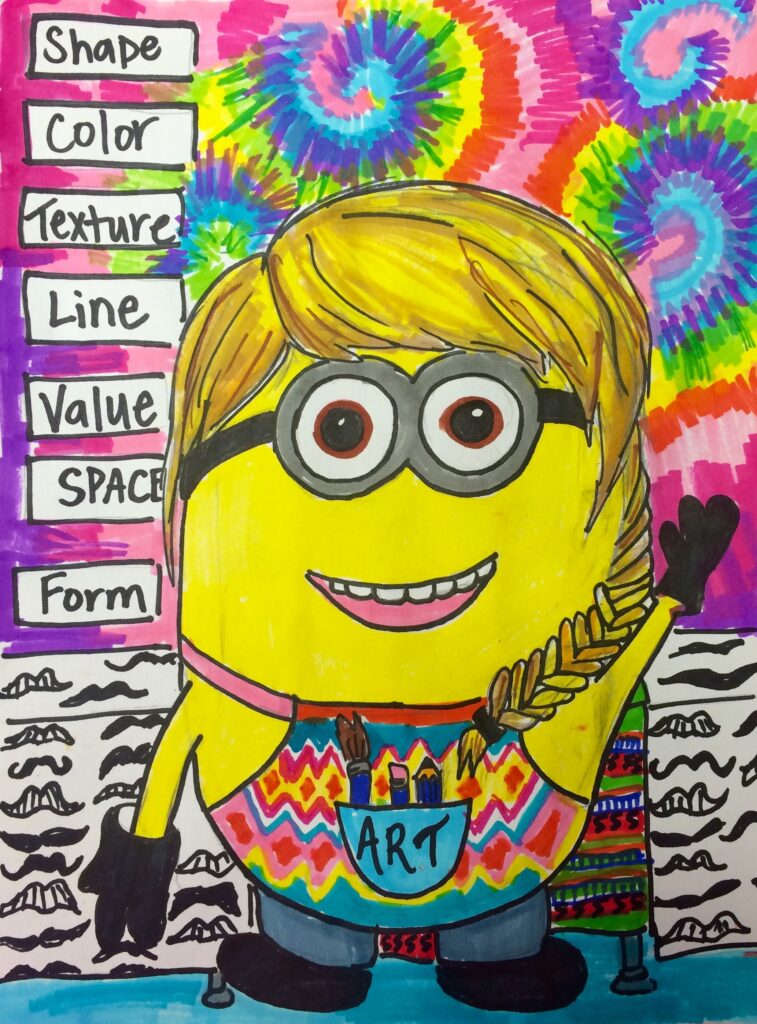
Writing and art can be used together to strengthen each other. Making it a practice to incorporate writing alongside art lessons will only benefit your students. If you’re new to incorporating writing in your art room, start simply. Try out one of the ideas presented here to get started!
What are your favorite projects that incorporate writing?
How often do your students write in your art room?
Magazine articles and podcasts are opinions of professional education contributors and do not necessarily represent the position of the Art of Education University (AOEU) or its academic offerings. Contributors use terms in the way they are most often talked about in the scope of their educational experiences.

Abby Schukei
Abby Schukei, a middle school art educator and AOEU’s Social Media Manager, is a former AOEU Writer. She focuses on creating meaningful experiences for her students through technology integration, innovation, and creativity.

Art and Appetite: 7 Ways to Explore the Significance of Food in the Art Room

7 Engaging Ways to Teach the Elements and Principles of Art and 3 Fun Ways to Review Them

10 Easy Strategies to Apply Brain-Based Learning in the Art Room

7 Common Misconceptions When Approaching Your Art Curriculum This Year

What it Means to Sell to the T..
Inspire thoughtful creative writing through art, important factors to consider ...
- by John McGill
- Artists Featured Articles Galleries & Fairs Marketing Tips Tips
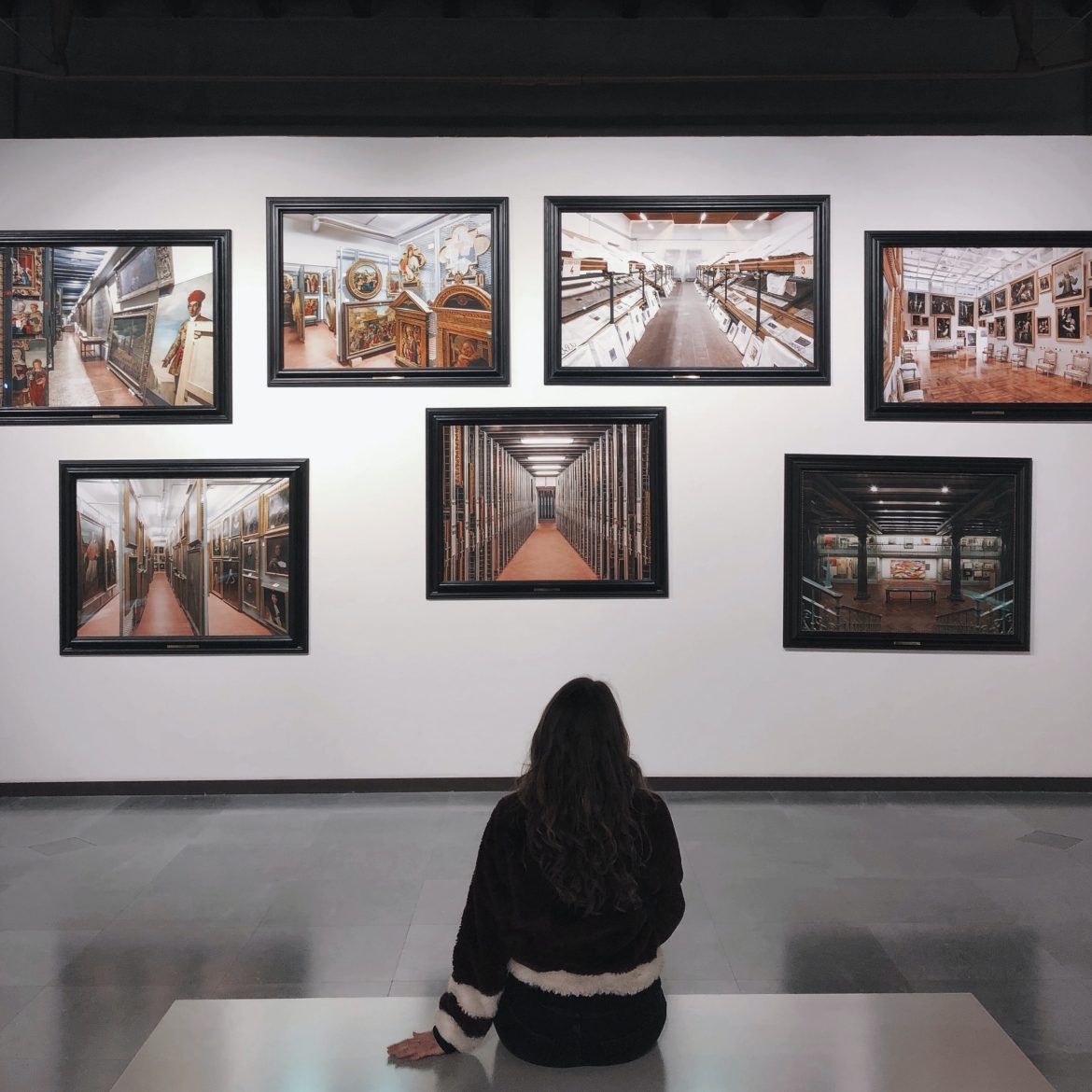
There are many ways to boost your creative writing performance However, the most effective and sophisticated of them is to inspire thoughtful, creative writing through art. The process listed below is a way to make any creative writing process thoughtful and make any creative text meaningful. Read on to find out how art could influence your writing in unexpected ways to make them brilliant and unlike others.
What is creative writing?
Before exploring the peculiarities of inspiring thoughtful creative writing through art, let’s take a closer look at the term creative writing. Here are some vital elements that define creative writing:
This element can be considered fuel for an entire plot. Usually, readers choose a character to sympathize with or anticipate him or her. And, generally, readers also identify themselves with a particular character subconsciously.
- Scene and surroundings:
When you tell a particular story or describe something with creative writing, it requires specific settings and surroundings. Depending on the plot, there may be only one scene or several of them. It is always necessary to present to the reader at least one scene that is described very well so the reader can imagine it easily.
This is a core element of any creative writing, be it a novel, a play, a poem, or a book. The plot usually has an ark that sets the whole story from introduction to end. Plots are something you cannot ignore; without them, the entire story is not possible.
Readers must spectate something that is going on between several characters personally or between one character and circumstances. The conflict sharpens everything and makes the plot catching.
Everywhere you go, it’s all about style — and writing is no exception. It is ephemeral but an essential element of creative writing. For famous world-renown authors, their style is the same as their unique fingerprint or signature they leave on their books for fans. You cannot underestimate the meaning of style. For published authors, their style is a reason why people buy the books they create. Compare the writings of Stephen King and Ernest Hemingway, and see the style of creative writing of both those fantastic personalities. The styles are completely different, but you can read their style in each paragraph.
- Point-of-view:
In simple words, they, you, or I can tell a story. In other words, in the first, second, or third person. This can be a vital element for some creative writing pieces, and for others, it is not. However, in my opinion, the easiest way is to narrate from the first person, as the personal opinion of the author.
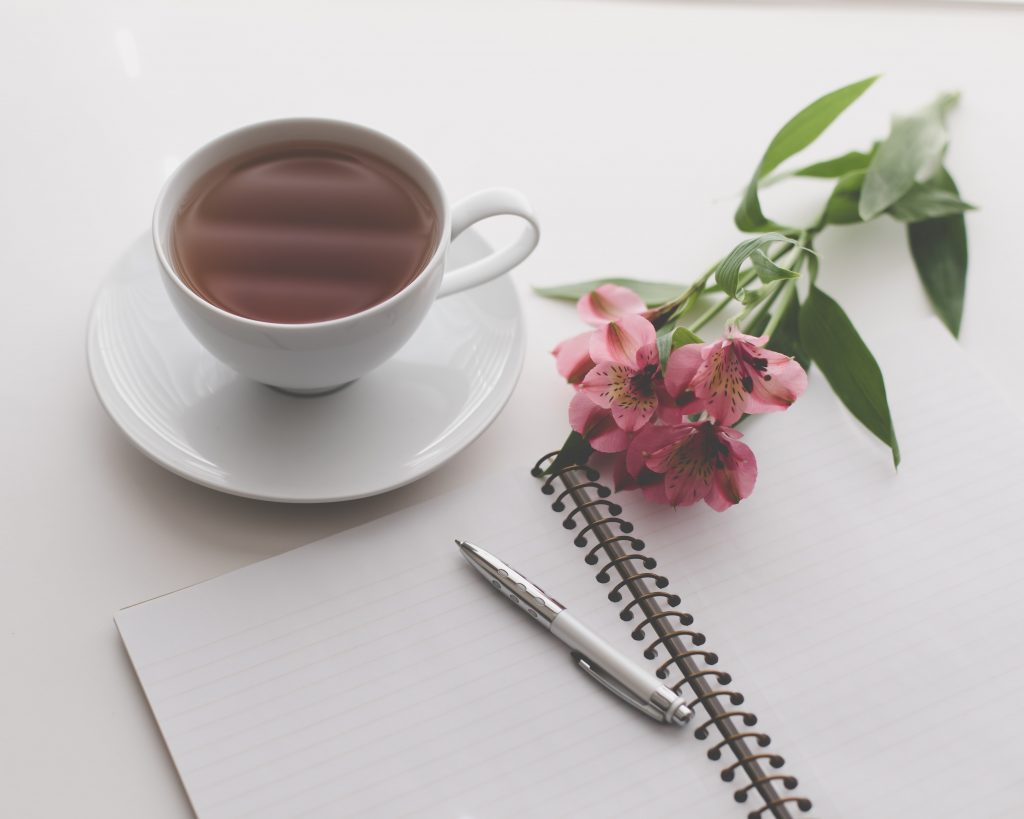
Photo by: Sixteen Miles Out, Unsplash
Core elements of creative writing
Assuming the list above, you need to be very open-minded in practicing thoughtful creative writing. It may be challenging at first, but as you progress, you will learn there are stages to creating a well-written piece. Any art masterpiece can be taken as a source of inspiration to activate your creativeness. There are four core elements, combine them and you will be able to achieve thoughtful, creative writing through art:
1. Observation
Art teaches people to observe patiently by slowing down their daily routine to find more profound meaning. Train yourself to compile your creative writing goals with the process of observation. Try to stop and think out-of-the-box when observing a particular piece of art. For example, if it is a painting, try to explore more of the details (if we are talking about paintings). Does the image contain people or mysterious characters, mythology elements, etc.? Depending on what kind of creative writing you are working on, choose pieces that create a particular mood.
When observing a painting, you need to ask yourself various questions that will stimulate your writing afterward. For example, what are the first five words coming to your mind when you see this painting? How do the color combinations make you feel? How did the artist use a focal point of the painting to draw your attention? If there are some unusual elements, then what do they symbolize? Imagine yourself getting inside the painting, which you are observing. What do you feel about being there? Can you imagine yourself staying here forever? If there would be sounds or smells inside the world you see in the picture, how could you describe them? Write down all your assumptions and thoughts. Be as much open-minded as possible. Do not try to analyze your thoughts and feelings at this stage.
2. Interpreting
Thoughtful, creative writing through art will be impossible without interpreting your thoughts after your art exploration. A good question to ask yourself is “What is going on because of things I observed?” and “Why do I feel the way I feel?” These two questions lie at the core of the creative writing process, and after you answer them, they will lead you to new plateaus in your creativity. Give yourself time to understand and interpret everything related to the artwork, don’t rush yourself, and be patient with your thoughts and feelings. Think over the reasons and variants of everything you understand as part of your creative writing process.
3. Communicating
Now you are ready to communicate your thoughts to others. It would help if you had a community of like-minded people who are willing to develop thoughtful, creative writing through art the same way that you are. Explain your ideas after completing the stages of observing and interpreting, be open, and share everything you want. Remember that the core of creativeness lies in an open mind and critical thinking. After the previous two stages, people are usually full of various thoughts and ideas, and you’ll likely feel the explosion of more ideas after sharing them. Communication is a key to success when it comes to creativeness. Trying to verbalize what you have achieved after diving into a particular piece of art in conversation can lift your interpretation to the next level.
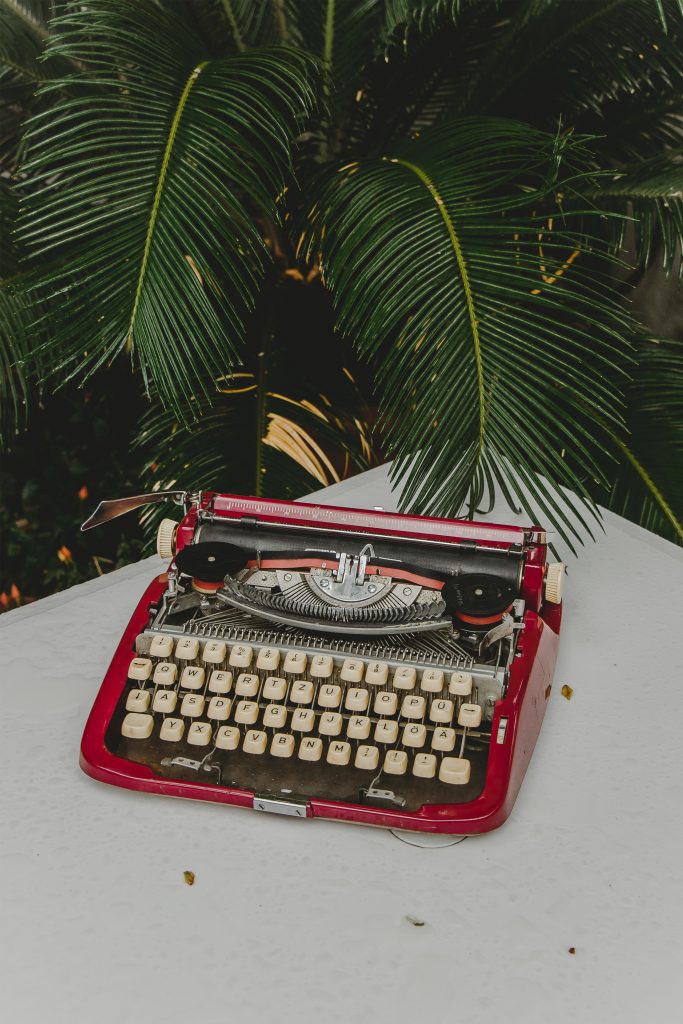
Photo by: Arash Asghari, Unsplash
4. Creating
Now it is time to dedicate time to thoughtful, creative writing itself. Here are some practical exercises that may be useful:
- Explain characters from the perspective of the protagonist and antagonist’s ideas; define essential values of their personalities and behavior.
- Pretend you are not a human, but a tree, a pattern, a piece of art, and describe your thoughts and feelings while playing this unexpected role.
- Imagine telling the story by another person, not you; how will the narrative change in such a situation?
- Create unexpected dialogues that could change the whole plot by making an unexpected twist.
- Describe the behavior of characters through their motives and the prerequisites defined by their previous life experience.
- Imagine that you have to persuade another person that your beliefs and thoughts are correct.
Using art to inspire thoughtful creative writing is an effective way to lift your writing performance to the next level. Before you start practicing creative writing, you need to understand what creative writing is and which core elements it contains. Among those elements are style, plot, character, scenery, conflict, and other vital parts that define this vast term.
It can be very rewarding to widen your vision and influence the outcome of your creative writing by using art as inspiration. It is easy to start by simply observing a piece of art, for example, a painting. Recall all the feelings arising in your soul and remember them. Do not analyze anything at this stage. Allow the following stage for interpreting and understanding your feelings and thoughts on the art. Then try discussing and interacting with other people to refine your idea further. The final stage will be you putting it into practice in your creative writing.
About the author:
John McGill is a professional author of a lead paper writing service essayshark.com and creative writing tutor. My hobby is Antic philosophy and a favorite modern author is Stephen King.
John McGill
Related post.
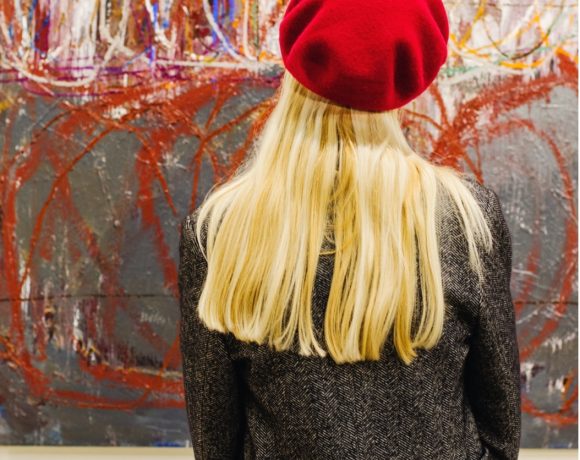
The Power of Art: Does Art Really Change the World We Live In?
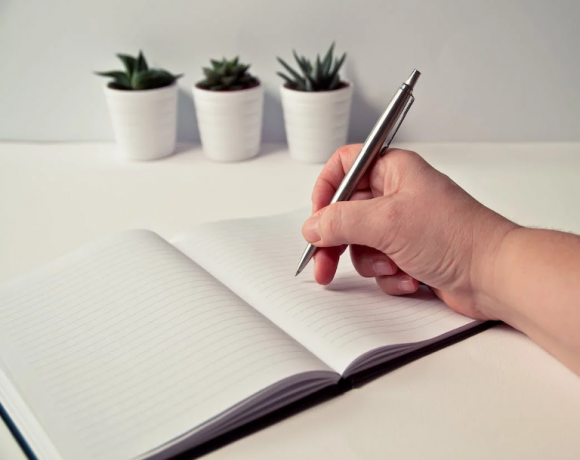
Is Writing an Art Form?

P.O.W.E.R. and Art Unite
Click here to cancel the reply.
Your email address will not be published. Required fields are marked *
ARTEXPO NEW YORK 2024

ABN Subscribe

THE REDWOOD ART COLLECTIVE


Creative Writing
"Creative writing offers the students an opportunity to explore life’s many landscapes, both outward and inward.”
— Yiyun Li
The Program in Creative Writing offers Princeton undergraduates the opportunity to craft original work under the guidance of some of today’s most respected practicing writers including Michael Dickman , Katie Farris , Aleksandar Hemon , A.M. Homes , Ilya Kaminsky , Christina Lazaridi , Yiyun Li , Paul Muldoon , Patricia Smith and Susan Wheeler .
Small workshop courses , averaging eight to ten students, provide intensive feedback and instruction for both beginners and advanced writers, and each year 25 to 30 seniors work individually with a member of the faculty on independent creative work: a novel, a screenplay, or a collection of short stories, poems or translations. Writers of national and international distinction visit campus throughout the year to participate in the Althea Ward Clark W’21 Reading Series and to discuss their work. The Lewis Center presents the biennial Princeton Poetry Festival drawing poets from around the world. The C.K. Williams Reading Series puts Princeton seniors at the podium alongside a lineup of established guest writers curated by seniors in the program. The Leonard Milberg collections and Princeton’s unparalleled library and archives also provide world-class opportunities for the study of contemporary literature.
Learn more about Program in Creative writing faculty , news , events , & courses .
Upcoming Creative Writing Events

Tue Apr 30, 2024 · 4:30 pm
2024 senior readings in poetry, translation, screenwriting, wed may 1, 2024 · 4:30 pm, 2024 senior readings in fiction.
Browse the events calendar to see all upcoming events from the Program in Creative Writing or arts partners across campus.
Creative Writing News

Apr 17, 2024
Announcing the winners of the 2023-24 princeton university high school poetry contest.

Apr 11, 2024
Princeton arts fellows for 2024-2026 announced.

Program in Creative Writing Celebrates National Poetry Month 2024

Apr 9, 2024
Lewis center for the arts presents readings of new work by students in princeton’s creative writing program.
Read more creative writing news
Climate & Inclusion
Learn more about the Lewis Center for the Arts' efforts on addressing Climate & Inclusion .
Receive Lewis Center Events & News Updates
- WORK WITH ME
- CURATED NEWSLETTER
- SLOW LOOKING CLUB
Inspiring Creative Writing through Art with Mary Hall Surface
- by Claire Bown
- April 20, 2022 February 14, 2023
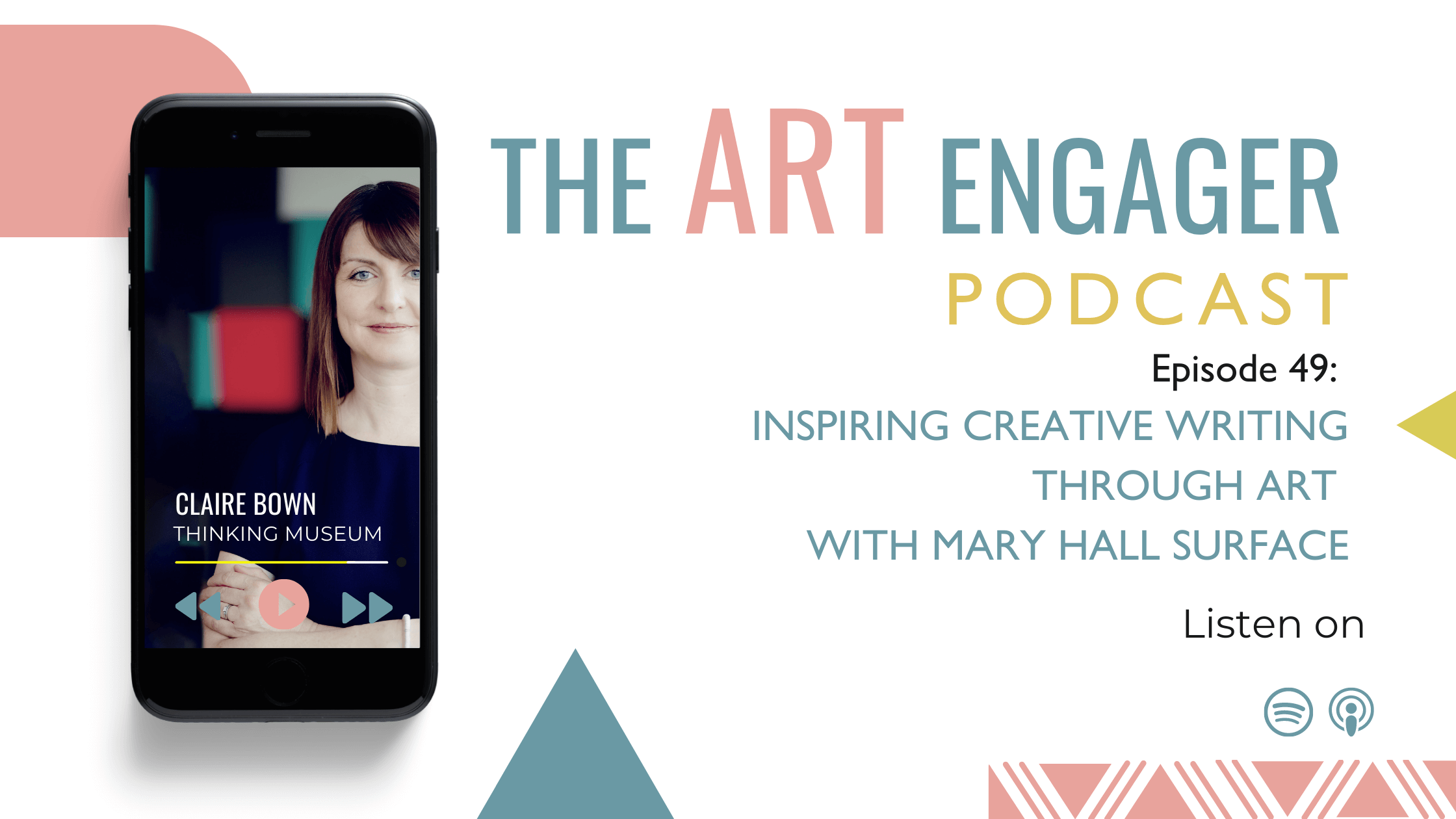
INSPIRING CREATIVE WRITING THROUGH ART WITH MARY HALL SURFACE
Introduction .
Today I’m delighted to be talking to playwright, theatre director, teaching artist and museum educator Mary Hall Surface about her work. We’re talking all things creative and reflective writing through art.
As a museum educator, Mary Hall uses both theatre and creative writing to expand perspective, uncover complexity and deepen understanding.
She is the founding instructor of National Gallery of Art’s Writing Salon in Washington DC, and a six-summer faculty member of Harvard’s Project Zero Classroom. Her plays have been produced at major professional theatres, museums, and festivals throughout the US, Europe, Japan, Taiwan, and Canada, including 4 art-inspired productions at the National Gallery of Art.
Mary Hall has an impressive online presence too, facilitating creative and reflective writing workshops and classes, all inspired by art for museums, schools, and arts centres throughout the US.
Mary Hall and I have a lot in common and in today’s chat we talk about our love of close looking, thinking routines and how you can use artworks to inspire writing.
We talk about a variety of projects that Mary Hall has been involved in at the National Gallery of Art , the Smithsonian American Art Museum , and the different types of online workshops that she teaches.
Mary Hall shares 4 wonderful tips for how you can improve your writing through art – so make sure you don’t miss those.
We really could’ve talked for hours and I loved our chat. So, here it – enjoy!
LINKS
Support the Show
Join the Slow Looking Club Community on Facebook
Masterclass with Mary Hall Surface 26 April: Inspire Your Memoir Writing through Visual Art
The SAAM Social-Emotional Learning Toolkit
Link to Open Window, Collioure , 1905, Matisse
Link to Edward Hopper, People in the Sun, 1960, oil on canvas, Smithsonian American Art Museum, Gift of S.C. Johnson & Son, Inc.,
Website & mailing list signup Mary Hall Surface – website and mailing list sign up:
Upcoming Smithsonian Associates workshop: Mothering: A Reflective Writing Workshop
Upcoming Van Gogh/Mary Oliver Workshop: Springs’ Awakening: A Reflective Writing Workshop
Writers’ Studio on the Amalfi Coast
Claire Bown 00:03 Hi, Mary Hall. Welcome to The Art Engager podcast.
Mary Hall Surface 00:06 Thank you so much, Claire, I am thrilled to be here.
Claire Bown 00:10 So Mary Hall, tell me. And we always do this with all our guests, because I think it’s quite nice for our audience just to imagine where you are. So could you tell us a little bit about where you’re based and where you are right now?
Mary Hall Surface 00:23 Yes, I am, in Washington, DC, where I’ve lived for about 30 years. And I live very close to Rock Creek Park, which is a beautiful national park that runs right through the city. And so in two minutes, I can be in the woods, and in about 10 minutes, I can be at the US Capitol. So it’s a beautiful city to live in.
Claire Bown 00:47 That sounds like a perfect location. And tell us all, Mary Hall, a little bit about yourself and what it is, is that you do.
Mary Hall Surface 00:56 well, I essentially have sort of three interlocking practices. And I guess is the way I’d talk about it is, I’m a playwright, I’ve got about 40 plays out in the world. And I’m also a theatre director, and producer. I’ve done all sorts of productions, and my great love really is creating what I call intergenerational theatre plays that really equally engage and inspire and challenge adults and young people. And I’m also a teaching artist, and I choose to bring my skills in drama and creative writing into schools and art centres, working with educators and most especially to museums. I work with public programmes, school and teacher programmes as well as in docent training.
Claire Bown 01:53 Fantastic, so you wear many hats. And today, we’re gonna be talking about some of these hats that you wear, because I’m fascinated by your work that you do. So I understand that you’ve done some work in the past with the National Gallery of Art in DC?
Mary Hall Surface 02:10 I have. Yes, very much so. So they really, I met actually, it’s someone we know in common, Heidi Hinish, came to see a play that I wrote, that was inspired by the work of Alexander Calder. And I’ve always loved art. And so artists sort of run through my work as a director as inspiration. And then this was the first time I’d actually written a play inspired by art. And Heidi saw it. And so she then commissioned me to write a play for the National Gallery inspired by the work of the American artist, Edward Hopper, and it was very successful. And then they asked me to write two other plays. And these plays essentially, were to engage the public in a very emotional and lively, personal way in the art and, and sort of inspired by the artists life and the artists methods, but they weren’t, you know, biographical plays, they were really sort of fantasies inspired by the work. And then out of that project, they invited me to launch what we call the Writing Salon. And that was in partnership with Natalie Ryan at the National Gallery. And that began as an in-person programme, we, we hope it’s going to come back it hasn’t yet, but an in person programme, a public programme, where we use art as an inspiration for creative writing, and then writing as a way to really deepen our connection to the art. And I absolutely loved that programme. And I never really thought about sort of sharing what it is that I do as a playwright, you know, in a broader way with museum audiences. And so just crafting those and imagining those, I just love and so it’s really taken off as a big part of my life and my practice and the National Gallery. I continue to offer them now online. And then they have a programme called Virtual Studio. And so when I am the guest teaching artist, it’s very much like Writing Salon online.
Claire Bown 04:23 Amazing. And that’s how we connected as well, because I was teaching a course and an Art and Words course, which was all about, creative writing and reflective writing that had been inspired by art and our paths crossed and we started talking and I thought, wouldn’t it be wonderful if you could come on to the podcast, talk about your work. And then we also found out that we have sort of Project Zero in common as well. So, tell us a little bit about being on the faculty there.
Mary Hall Surface 04:52 Well, yeah, it’s a funny story. When the play that I wrote about Hopper opened at the gallery, Heidi Hinish again from the National Gallery came up and said, Gosh, you know, we, our education programme is so deeply involved with the pedagogy of Project Zero. And we really appreciate, you know, integrating their thinking routines and strategies into the way you imagined and presented the play. And I said, What are you talking about?
Mary Hall Surface 05:21 I was actually unfamiliar with Project Zero at that point. And they introduced me to the thoughts and the practices. And then ultimately, I was invited to join the faculty as one of very few sort of drama-based instructors. And so I taught there for five years, and my course was really focused on perspective, taking, it’s called standing in a character’s shoes, and it’s about stepping into a character, either in a text or history or most often in visual art, and really imagining the emotional complexity of that character in a very specific moment, and then giving voice to that complexity in a dramatic monologue. So my time with Project Zero was incredibly expansive to my own thinking, my own practice, and in many ways, very galvanising, because I really discovered that I am artistically disposed to think and create in thinking routines, in a sense,
Claire Bown 06:29 Yeah, and I love this because it’s so influenced my work as well, and has also brought me in touch with Heidi Hinish. And we’ve done workshops together in the past because of the work of Project Zero because of Visible Thinking and thinking routines. And yes, still very much informs my work today. And it’s, yeah, my part of my mission, I guess, is to spread this love to the wider world and actually make the joy of thinking routines more well known, I think, in the world. Yeah. And so tell me some about the core values and principles that are essential in your work.
Mary Hall Surface 07:10 Well, I, I truly deeply with all my heart and soul believe that the arts are transformative for individuals, for communities, for the entire world, they are central to our humanity, and thus, really, to our well being, and to our potentials. And I also really believe that the arts are an embodiment of possibility and change, personal change, social change. So I work to ensure that the arts have a vibrant and robust presence in everyone’s life as successively as possible. across communities, diverse communities, and in schools and museums.
Claire Bown 08:03 Wonderful values. Yeah. Wonderful principles. And linked to this, do thinking routines still play a role in your work? Are you still actively using them?
Mary Hall Surface 08:15 Oh, absolutely. Absolutely. As I said, I think they just align with how I naturally think and feel. And imagine. I mean, the wonderful thing about thinking routines is that they are really crafted to support, you know, sort of ever deepening understandings, and really expansive thinking, which is what I’m all about. So they are sort of explicitly and implicitly everywhere in my work, and, and I’m also very, very creative with them. I think when people first begin to work with thinking routines, they think, Oh, well, okay, this one is this one. And this one was that one, and I need to follow the steps. And yes, that’s a good way to start. But I’ve also become very creative with thinking routines, I imagined my own and I adapt them, you know, to whatever purposes I’m applying them towards. So I encourage folks to enjoy their fluidity as well as the structures as presented.
Claire Bown 09:19 Yeah, I’m nodding along furiously here, because I absolutely agree. I think one of the reasons I’m so drawn to them is that they do offer this structure, but that it’s a structure that is very flexible, and you can be creative with it. And you can combine or as you say, develop your own thinking routines. And I think the more you work with them, the more your mind tends to go in that direction. And you start thinking of all the possibilities. So yes, that very much speaks to me as well. I’d love to talk about perhaps some projects that you’ve worked on. Perhaps you could talk a little bit more about your work at National Gallery of Art thought, for instance, about some creative writing reflective writing opportunities that you’ve developed there?
Mary Hall Surface 10:08 Yes, absolutely. I mean, the thing about Writing Salon is that it really is designed to look at the craft of, of writing and offer folks some very specific tools, using art, as the inspiration I mean, each of the workshops have a focus of, of a element of art, like Sorry, an element of writing, like character, setting, stories, story arc, points of view, dialogue, tone. And we always start with close looking at something I know you are a big fan of slow, close looking. And the idea is to really take in all of the artists choices before beginning to interpret or imagine and we know the value of that in, you know, relating to museum visitors, but it’s also really important for a creative writer because if you can really hold back that human urge to spin story, you know, to know and assign meaning then you you have a much larger imaginative canvas from which to work. So we begin with that slow looking and then we go through a series of scaffolded prompts that really offer tools to the writer to enhance their craft. And we can talk more about Writing Salon too, but other things that I do at the National Gallery, I’ve mentioned that the article productions, most recently was a play called Colours Garden that was inspired by the work of Henri Matisse, specifically his cutouts and I was so impressed with how the gallery really leveraged the opportunity to have a theatrical production not only did school audiences come, public audiences came, it became the centrepiece of family days where families could make together cut outs inspired by the Matisse cutouts. They could go see the gallery’s collection of the cutouts. It was just a very rich, rich way to sort of embed theatre at the centre of programming public programming. Yeah, yeah. But I thought it might be fun. Just to mention that I, you know, I’m working with docents. I mean, this is sort of a whole other subject. But my focus there is really encouraging docents to animate their content, by really thinking about story and how stories are structured with beginnings, middles, and ends and incorporating dialogue, and where do you start in your story? So I really, really enjoy that work as well. I mean, I do that at the National Gallery and other museums.
Claire Bown 12:53 Wonderful. So docent training, basically. Yeah, very much. Perfect. And I also because I had the pleasure of seeing you, but you were at MuseumNext as well, recently.
Mary Hall Surface 13:03 Yes, yes, that was such a wonderful conference. And for that, I was sharing a collaboration that I was involved with, with the Smithsonian American Art Museum and wonderful educator there Elizabeth Deines and it, we created a Social-Emotional Toolkit, which is now available for anyone in the world to download on the internet. And it really, it was based on a workshop that I created in response to the pandemic. And it uses close looking and reflective writing, to develop self awareness, you know, really tuning into our thoughts and our feelings and our responses, as well as to really develop and build and strengthen resilience in our ability to adjust, stretch, and even grow in the face of challenges. And, and that uses, again, sort of a variation of a thinking routine, which is we see what is usually to teachers and students an unknown work of art. So we have to navigate through an unknown and then we feel we meet and manage really new and strong emotions. And then we connect, we strive to really see how this unknown connects to our lives. And that really encourages students and educators to frame their responses in such a way that they experience a real sense of agency and in the process, deepen their understanding of themselves and and one another. So it was really a beautiful project and the Smithsonian American Art Museum has done a wonderful job in trying to get this toolkit into the hands of really diverse communities around the United States and, and I hope today will encourage people around the world to seek it out
Claire Bown 13:49 as well. Yeah. Well, hopefully it will provide a link to it for the for the show notes so people can also download it. Absolutely. That’d be great. Yeah. Yeah. And you’ve been online recently. So we were just discussing before we started recording how we’ve moved, or everybody has moved online in the last couple of years. And that gives new possibilities, new creative possibilities. But, you know, also a chance to reach people further afield as well. So can you tell us a little bit about your online workshops that you run?
Mary Hall Surface 15:34 Yes, it has been a real opportunity to transform my practice in ways that I would not have done probably had the world not taking the turns that it has. And it’s really been through the Smithsonian Associates, which is actually a nonprofit that operates in partnership with the Smithsonian Institution and offers all different kinds of programming and workshops. And so through them, I offer a series of Creative Writing workshops, they’re 90 minutes, people can take one or they can take the whole series. And again, they’re rooted in the craft of writing, inspired by visual art. And I also teach for them reflective writing workshops. And in the reflective writing, I often pair it with poetry, and appear a work of art with poetry. For example, I have one called ‘Springs Awakening’, where we use Van Gogh’s almond blossoms, and pair it with some points by the American poet Mary Oliver, who’s very much engaged with nature. And we look at the lessons that spring offers us if we slow down and reflect. I guess the other thing about this practice it’s really evolved is, there’s a lot of ways that you can use art as an inspiration for writing, you can just, you know, jump into a candlelit painting, and imagine you’re in Venice and what it feels like and smells like and tastes like. But something that I really like to do also is to align the writing exercises that we’re doing with some particular aspect of either the how of the painting, or the some aspect of the artists life or, or practice like, just this week, I taught a workshop called Impact, tone and mood. And we used Matisse is beautiful photo of painting, Open Window, Collioure, which is vivid colours, and all different kinds of love that painting and all different kinds of brushstrokes. And so I encourage the writers to describe the painting really trying to parallel the tone of their language, the length of their sentences, the sentence, the word choices, the punctuation, really tried to parallel their verbal choices with the artists visual choices. So long language sentences, contrasted with little dogs of adverbs and poppy words. And so that sort of approach is something I really enjoy. Or, like, with Edward Hopper’s painting People in the Sun, this is a painting where is a group of five people and they’re all just sort of sitting in the sun on a on a porch, all looking in the same direction and not engaging with one another. And when I’ve worked with that painting, share the fact that Hopper had a lifelong love of the cinema. And so we one of our prompts was Imagine if these, each character is watching the film of their life. Where are they in the film, what’s happening in the film. So again, it was a very creative prompt, but it was rooted in Hopper’s own life and practice. And so that’s, I guess, it’s the playwriting me but I just love making all of those connections, and inspiring people in that particular way.
Claire Bown 19:13 And an artwork can provide so so just such a big jumping off point for so many ideas as well. I’ve also worked with that same Edward Hopper painting in the past in another thinking routing class. I know that one very well, and I will include links to some of these artworks that you’re mentioning, and obviously the Van Gogh’s beautiful springtime blossoms as well thinking about those and connecting those with poetry. What a wonderful idea. So what I’d love our listeners to take away with them is maybe a few tips for how they can develop their own writing through art. Have you got anything that you could share with this?
Mary Hall Surface 19:51 I didn’t think about that. It’s fun to try to distil one’s practice into some tips. So yes, I would say number one And you’ll like this one is to start with looking slowly. And really, really take in the visual information first. Because I think if you start with is, in a sense, the aesthetic story, then you have more possibilities. And then the idea of stepping into a work, really think about all the different possible perspectives that you can step in to mean yes, I mean, if a work is figurative, you can certainly imagine what the people might see think feel, want know, perceive. But what about the inanimate objects in the work? What might the table or the violin know or want? Or if it’s a landscape, what might the different points of view be of the clouds versus the sun? Or in an abstract work of art? And what about the colour the line the shape, or the imagine that the work of art itself, the painting hanging on the wall, or the sculptor on sculpture on the stand, what might it as a thing, see and know and feel. So I really encourage folks to think about all the different perspectives that you can step into. And then also to think about this work as a conversation, sometimes I find people are sort of overwhelmed by the work of art that they are engaging with it, somehow it knows more than they do, or that they have to somehow be right about it. Well, art is a conversation, a conversation across time across cultures, the work of art is giving you everything that it has. And so you, I encourage you to bring all that you are to the process of writing in response to art so that it’s a beautiful two way street. And then finally, I would encourage you to explore what you do not see, when you think about the untold story, if you will, of the work, what did the artist not include in an image? And what might be just beyond the frame? So again, that’s a very prospective expanding approach.
Claire Bown 22:14 So those are my tips. Oh, they’re wonderful, especially the last one. I’m thinking about that already. And thinking about how that might encourage you to imaginatively creates more words on the page. Absolutely. Thank you so much for those. We are delighted that you’re coming to give a class to my membership on the 26th of April, perhaps you could tell us a little bit about this special class that you’ll be leading.
Mary Hall Surface 22:42 I’m so pleased to be able to do this with you, Claire. Yes, it’s called Inspire your Memoir, Writing through Visual Art . And this is going to be a very interactive class, we’ll be writing to a series of prompts. We’ll be using the chat as a place to specifically reflect in response to some specific prompts. We’re going to be working with a really fascinating work of art by Romere Bearden. And he was a 20th century African American artist. And the piece is called tomorrow I may be far away. And it’s a collage painting where he combines multiple pieces of found papers and as well as papers that he paints into forms. And it’s inspired by his memories of spending his summers away from his home, which was Harlem, New York, but spending his summers with his grandparents in the deep south of the United States. And so we’re going to be looking closely at the work and beginning to imagine the artist’s relationship to the place and the people and considering the metaphorical power of some of the images. And then inspired by Bearden’s collage process, we will piece together our own memories of an important place in our lives, paralleling in our writing, burdens layering and recombining of images and textures and memories. So it’s people have really enjoyed this workshop, whether you’re an experienced writer or you’re just curious about writing. What it offers is a real clear series of steps for recalling the past in order to consider its impact on our present because that’s what a memoir is.
Claire Bown 24:32 Oh, brilliant. I can’t wait. I’m so looking forward to this and we’ll put a link for people to sign up if they want to sign up as well because it is open to non members as well. We are approaching the end of our time together very sadly, although we could talk all day I’m pretty sure. So tell our listeners how they can find out more about you how they can reach out to you and Could you share some details of where you hang out?
Mary Hall Surface 25:03 Absolutely. I am not as active on social media as I should be. But you can find me on Facebook as Mary Hall one word. It’s my first name and surface or my website, which is my full name, Mary Hall surface.com. I have a mailing list. And I would love for folks to join that because I do send out newsletters about what I’m teaching where I’m teaching. I’m actually teaching the ven ven golf, as you say, spring workshop in May in Washington, but it is online and I would love to have people join in on that.
Claire Bown 25:40 Fantastic and i Yes, I subscribed to your newsletter. It’s wonderful. So we can put a link for that and your your Facebook, your social media and your website as well. But it’s been absolutely wonderful talking to you today. Mary Hall, thank you so much for coming on to the podcast. Looking forward to your master class. And yes, thank you again.
Mary Hall Surface 26:01 You are so welcome, Claire. Thank you very much. I look forward to the class as well. Thanks. Bye
Claire Bown Bye bye bye.
THE SLOW LOOKING CLUB
And don’t forget my free new facebook group the slow looking club created especially for podcast listeners. it’s a place for conversation and discussion about engaging with art, objects and life slowly. i’ll share resources, ideas and tips for anyone interested in looking at art – whether it’s for your personal enjoyment or your practice as a cultural educator. and we’ll have regular slow looking moments together too, privacy overview.
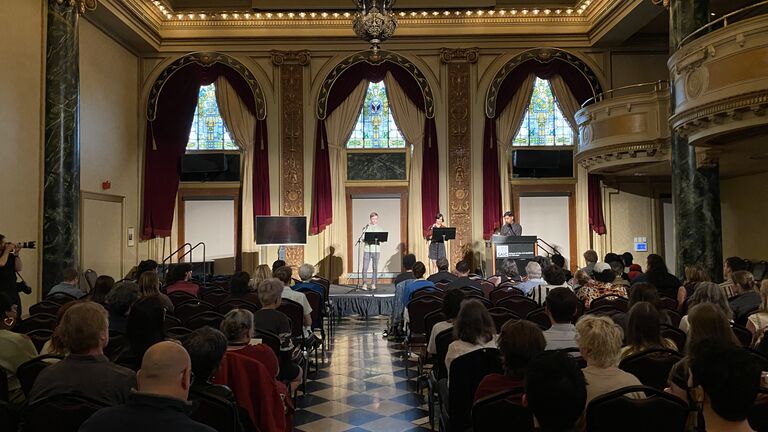

Writing Department: Undergrad & Graduate Writing Programs
The School of the Art Institute of Chicago's (SAIC) Department of Writing brings together a community of writers and artists at one of the nation’s most influential colleges of art and design. We seek students who thrive in a challenging, self-directed, and experimental environment, in which the literary arts are a living and open field. SAIC’s Writing program is distinct from more conventional programs and writing schools in that it brings together a community of writers and artists and draws on a distinguished faculty with diverse artistic and intellectual concerns.

Freshman and Transfer Final Deadline: June 1
Learn more about applying to SAIC for fall 2024.
Accepting Applications
Apply to SAIC's graduate Writing program for fall 2024 admission.
At SAIC, students in the undergraduate and graduate writing programs have a unique opportunity to explore writing both within and between genres, and to creatively connect with visual art practices throughout SAIC. We welcome students from all programs across SAIC’s diverse, interdisciplinary community who wish to pursue writing as part of their education and creative practice.
Writing Courses & Curriculum
The Bachelor of Fine Arts with an Emphasis in Writing (BFAW) program emphasizes a process-based approach to creative writing—one in which students experience writing across genres and in interdisciplinary and hybrid modes. Fully integrated into SAIC’s studio departments, you will explore the relationship between language and visual art by connecting writing to comics, graphic novels, artist’s books, painting, performance, film, sound, and gallery installations. The BFA with an emphasis in Writing program’s curriculum includes courses such as:
- Introduction to Writing as Art
- Two-semester literature survey
- Writing workshops for prose, poetry, comics, plays, and hybrid projects
- Generative seminars with multi-genre topics such as: artist books, literary monsters, and electronic writing
- Undergraduate thesis workshop—a small, intensive class in which students conceive, generate, and revise a creative project of their choice
The Master of Fine Arts in Writing (MFAW) welcomes writers of all genres—fiction, creative nonfiction, poetry, and playwriting—and visual artists who work with language as an integral component of their practice. The two-year writing program provides a rigorous yet flexible curriculum to challenge and accommodate individual explorations of process and form. Students in the graduate writing program are encouraged to work with their advisors to develop a plan that takes advantage of adjacent fields of study, such as performance, film, sculpture, arts journalism and art history, as well as many other possibilities, to best support their continued growth and writing journey.
Learn more about the Writing Department's undergraduate and graduate programs.
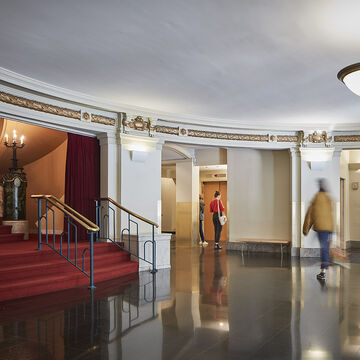
Alumni Accomplishments
Our distinguished alumni are widely published and cultivate the literary landscape.
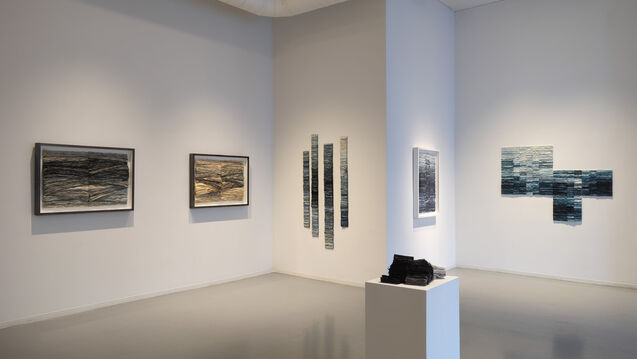
February 2024: Faculty and Staff Accomplishments
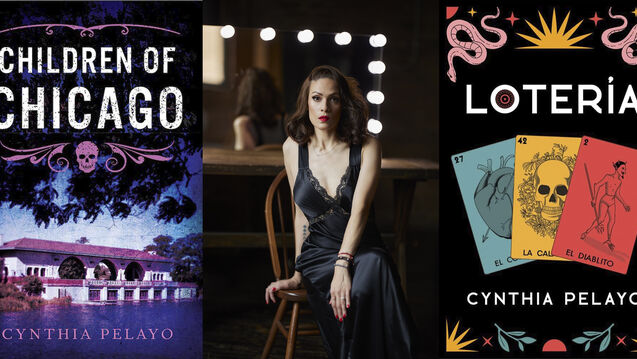
The Beautiful and Ominous Worlds of Cynthia Pelayo
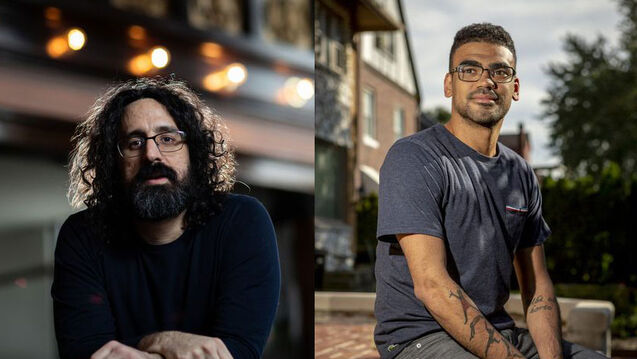
Michael Zapata and Gabriel Bump Included on Tribune's List of New Writers to Know
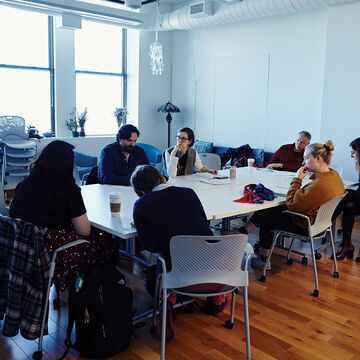
Department of Writing
Lakeview Building
116 S. Michigan Ave.,
Chicago, IL 60603
Mark Booth [email protected]
MFA in Writing Graduate Coordinator
Ruth Margraff [email protected]
BFA in Writing Undergraduate Coordinator
Sara Levine [email protected]
Senior Administrative Director
Amber Da [email protected]
Administrative Assistant
Richard Gessert [email protected]
Scholastic Art & Writing Awards - Alliance for Young Artists & Writers
- Awards Discover how entering the Scholastic Awards opens the door for recognition, scholarships, and more
- Programs Exhibitions and workshop for teens, professional development for educators
- Support Empower creative teens and elevate youth voices with your support
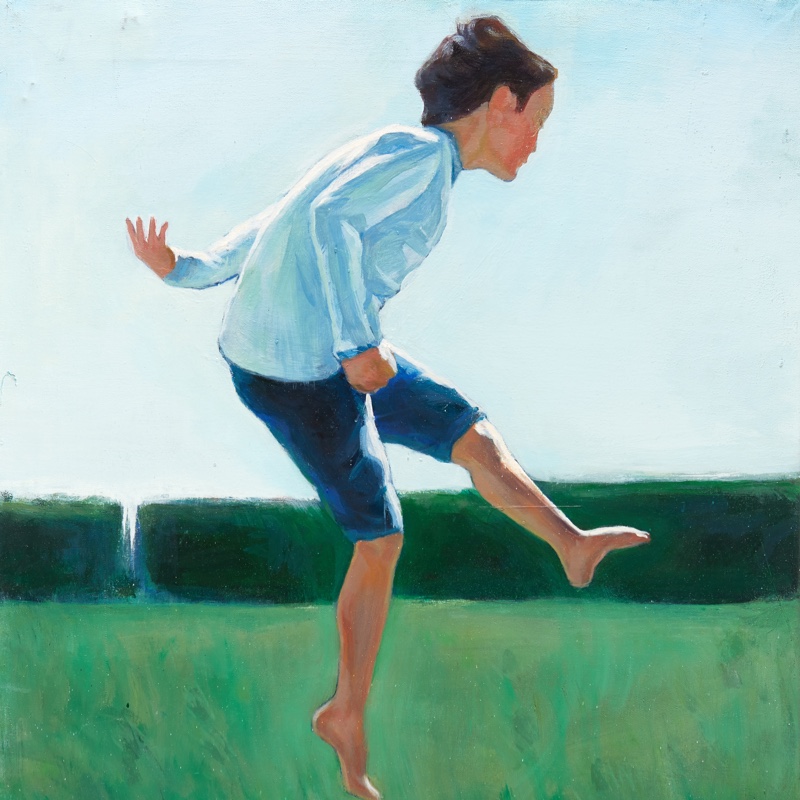
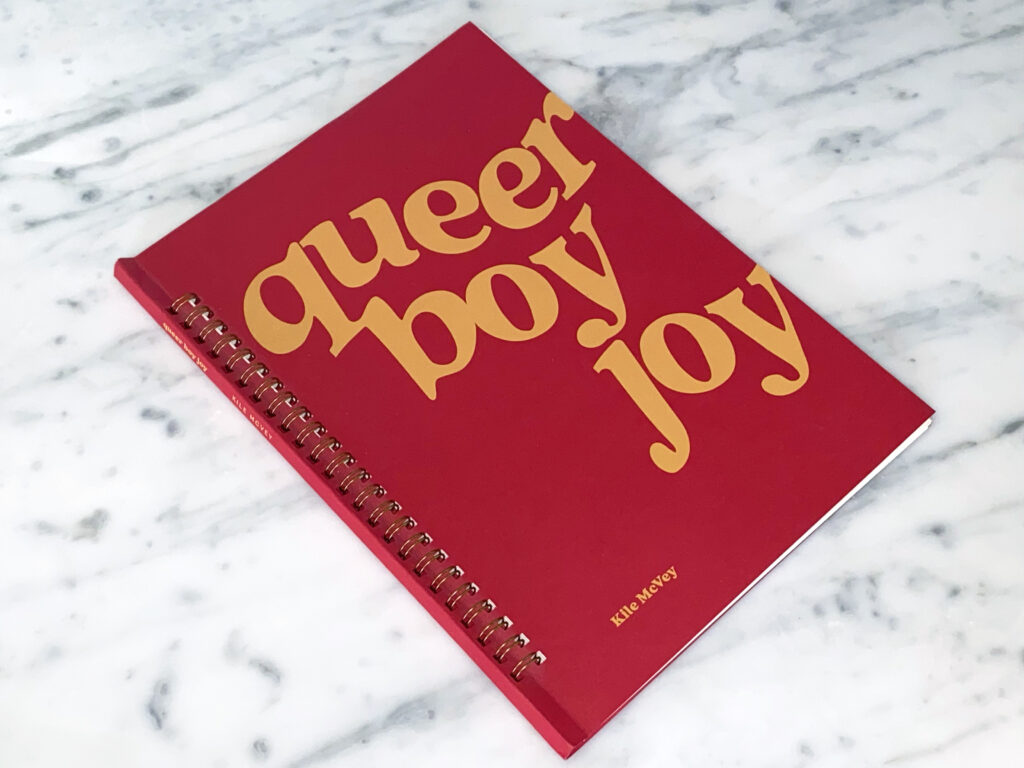
BFA Major in Creative Writing
Creative writing and poetry, writers = artists using words to create.
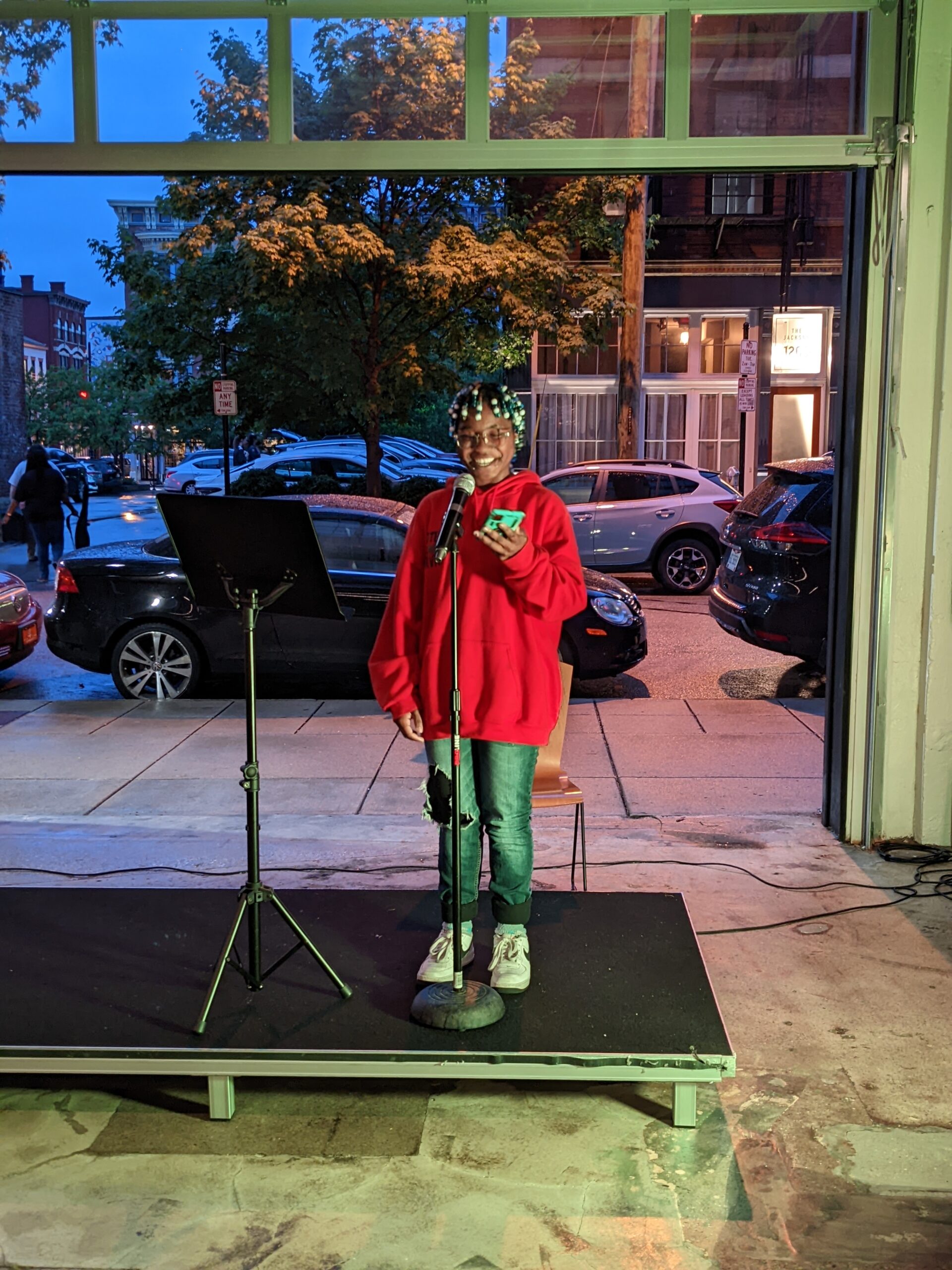
AS A CREATIVE WRITER YOU WILL:
- Develop a working knowledge of traditional and experimental writing modes
- Interpret the world with generosity, intelligence, recklessness, inclusiveness, and awe
- Comprehend the history of literary innovation, including hybrid and non-Western forms
- Understand language as a material artistic medium and the fundamental conceptual framework by which we make sense of the self, other people, experience, and the world
- Embrace failure, risk, and experimentation as necessary to artistic growth
- Create short collections of work, such as linked short stories, essays, or serial poems
- Read widely, wildly, and actively to expand your horizons and influence your work
- Give public readings, including commentary on your inspiration
And that’s just the beginning. By the time you graduate as a seasoned wordsmith, you’ll have sent work out for publication, applied for a writing fellowship, or an online portfolio ready to go. We’ll help make sure that you’re ready to go out and do great things with your craft!
Check out requirements, recommended courses, and more!
Change the world with your words.
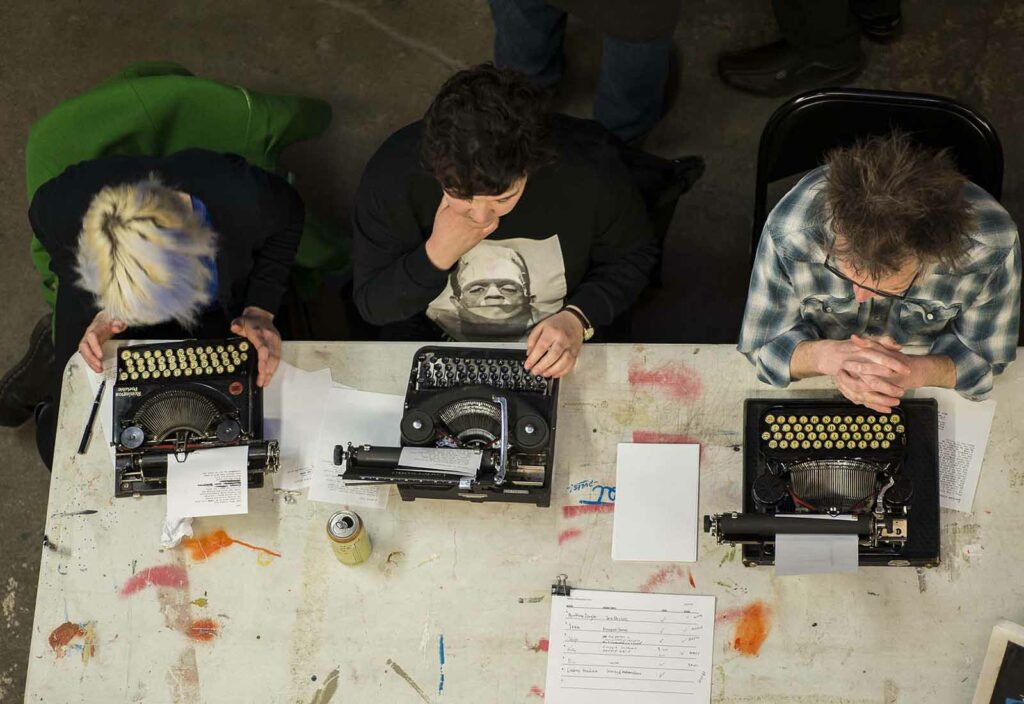
I did not understand the power and the presence behind the act of making poems until I came to the Art Academy of Cincinnati. Here, I am surrounded by people like Brett, Megan, and Matt who do not simply make poems. They create spaces, foreign feelings, and unimaginable sound using only language.
Tools & Facilities
Creative writing provides:.
- Liberal Arts studio space
- Curated artist book library with 2500 titles
- Record player listening stations
- PA and mics for readings
- This is WAAC literary magazine
- Poems While You Wait
- Creative Writing Reading Series
- Visiting Writers
- Collaborative Learning Studio
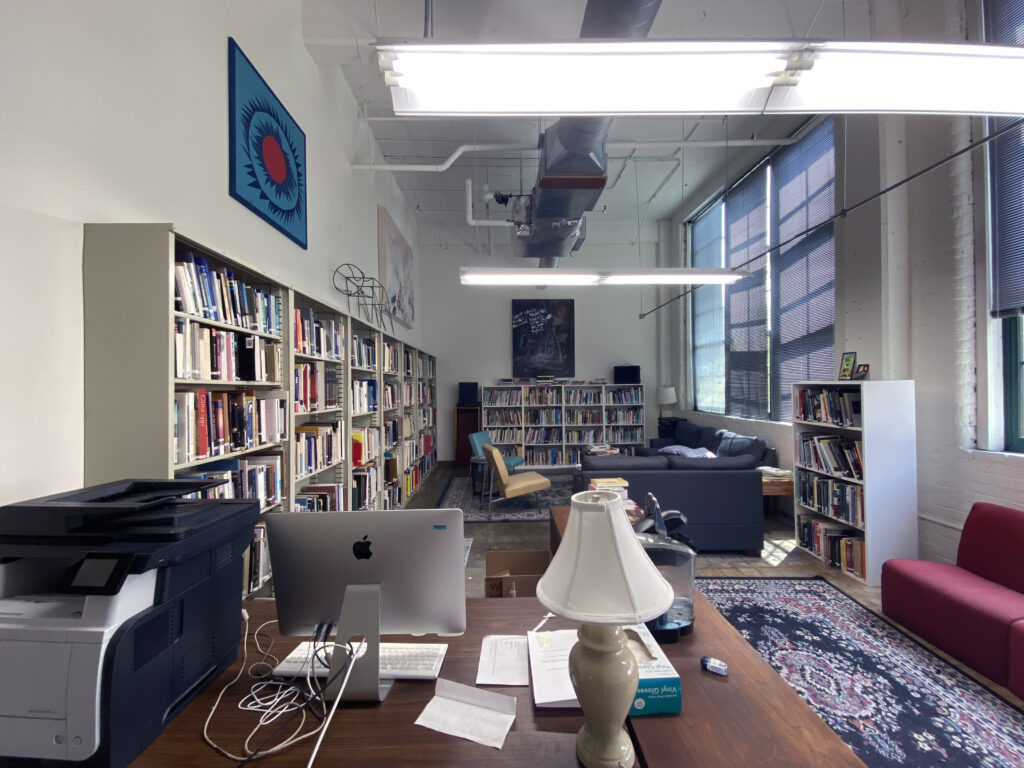
After your time at AAC, you’ll be ready to become a…
screenwriter
ghostwriter
social media specialist
grant writer
content EDITOR
public relations
technical writer
critic/ reviewer
Need help selecting the perfect programs for you? No problem.
1212 Jackson Street, Cincinnati, OH 45202 Phone: 513-562-6262 | Toll Free: 800-323-5692 Fax:513-586-0483
Consumer Information
AAC Employment
HEERF Reporting
Exhibitions
Accreditations
Campus Cafe
Cookie Policy
Accessibility Statement
Diversity Statement
Title IX Hub
About Us & Policies
- Money Matters
Admissions Overview
How to Apply
Requirements & Deadlines
Request Info
Leave of Absence
International Students
DACA & Undocumented Student Policy
Explore Cincinnati
Money Matters Overview
Financial Aid Overview
Scholarships
Grants & Loans
- Programs & Majors
- Register for Classes
- Faculty, Staff, & President
Undergrad Program Overview
Creative Writing
Digital Arts Animation
Illustration
Painting and Drawing
Photography
Print Media
Associate of Science in Graphic Design
Master of Arts in Art Education
Academic Calendar
Academic Catalog
Course Offerings
Request a transcript
Employee Bios
President & Board of Trustees
- News & Events
- Office of Engagement
Facilities & Rental
Student Studios & Amenities
Office of Engagement Overview
Community Education
Camp Art Academy
Teen Academy
Future BFA Prep
Outreach & Enrichment
Scholastic Art & Writing
Artist & Writer in Residence
Social Impact
Corrina Mehiel Residency
- Student Affairs
Student Affairs Overview
Academic Opportunities
Student Life
Housing & Parking
Safety & Security
Counseling & Academic Assistance
Studios & Facilities
Office of Professional Development
Student Employment
Food Services
Academic Catalog & Handbook
Diversity, Equity, Inclusion & Belonging
Alumni Association
Due To Inclement Weather
Classes are cancelled, january 25th, 2023.
Creative Writing
Program description.
Embedding the development of an evolved practice of creative writing in a school of art and design.
Embedding the development of an evolved practice of creative writing in a school of art and design , the Creative Writing program offers a unique opportunity to explore writing's relationship with contemporary art through interdisciplinary and hybridized forms.
The major is centered around creative writing studio classes in a variety of genres to build experience with the art of writing. We explore the use of language as a visual medium and incorporate writing into our visual work. We support both experimental writing practices and those focused on contemporary forms of fiction, poetry, and script writing. Innovation, crossing—and at times erasing—creative boundaries, experimentation with forms and media, and a self-determined path sit at the heart of creative writing at PNCA.
Student Work
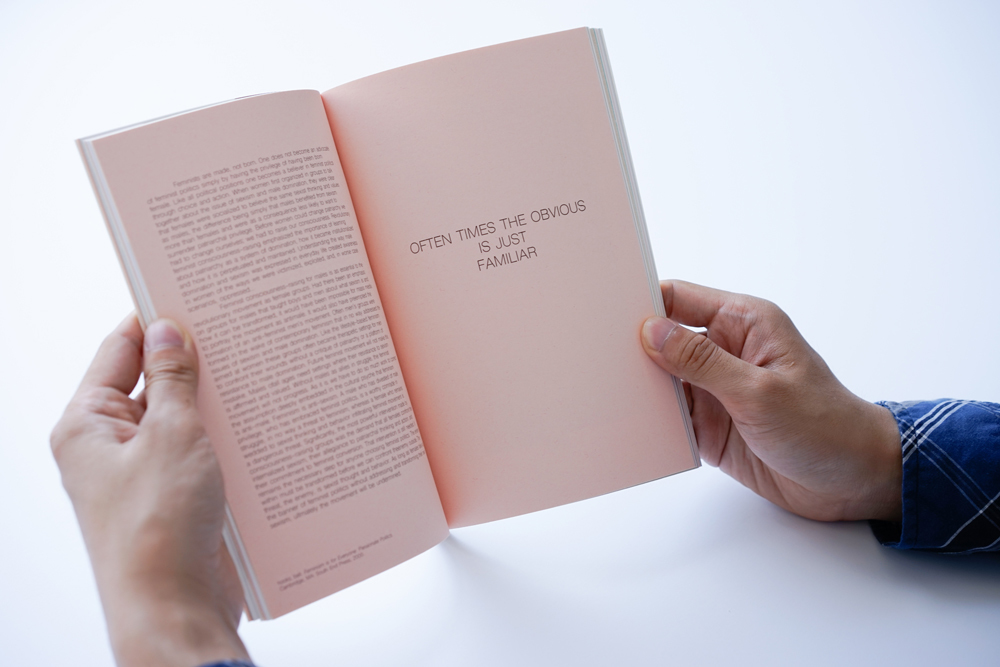
I work with fragmentation, the tension between immediacy and accessibility in the experience of poetic and visual works, and the state of the word in contemporary visual culture.
See All Program News
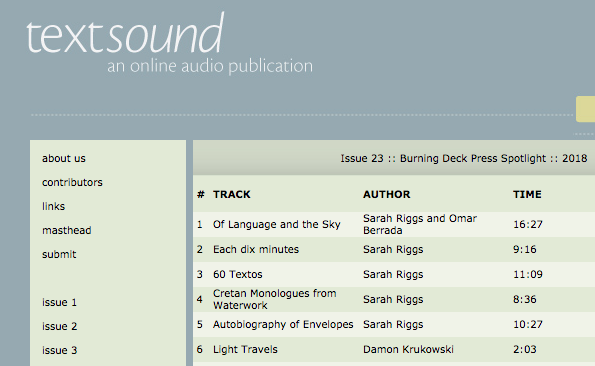
Kristin Bradshaw featured on Textsound
Creative Writing Program Director, Kristin Bradshaw, has four works featured on the current issue of Textsound.org.
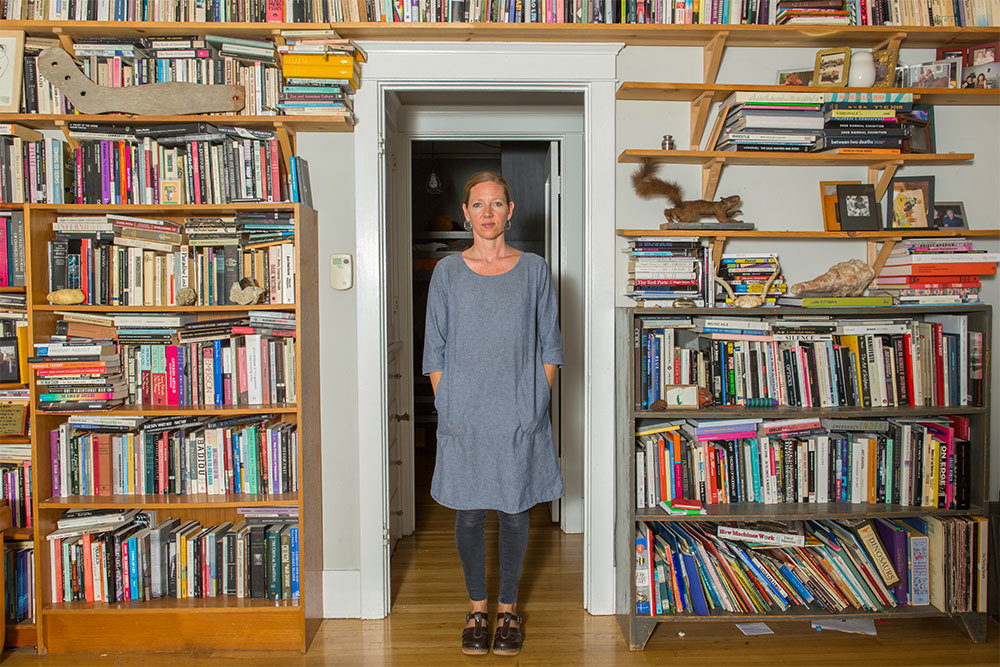
Maggie Nelson Lecture and Visit
Nelson, author of Bluets and The Argonauts, comes to PNCA to give a talk.
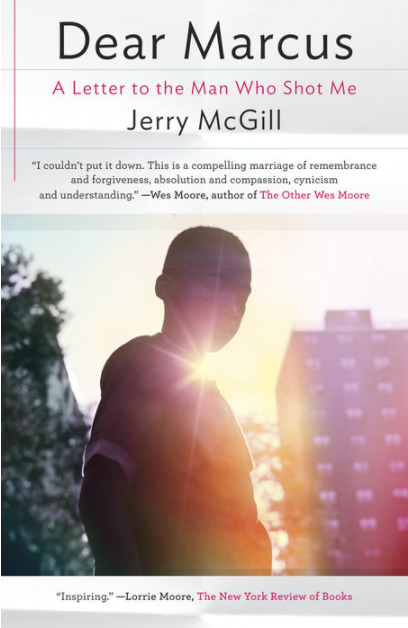
Jerry McGill Interviewed on Think Out Loud
The MA in Critical Studies program recently hosted a talk by author Jerry McGill who was interviewed this week on OPB's Think Out Loud.
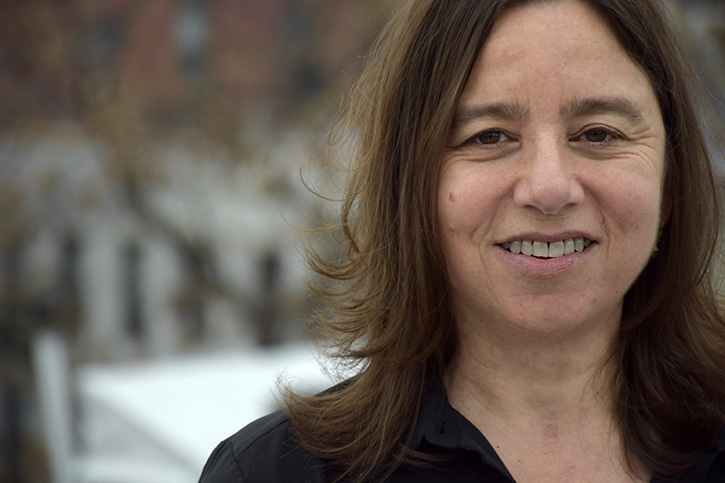
Hear Sarah Schulman: Conflict is not Abuse
Video of Sarah Schulman's December talk is now on YouTube

Writing in and as Art
Panel of nationally-recognized curators, publishers, artists and poets
Visit PNCA today!
Come explore and experience how PNCA is dedicated to empowering students to reimagine what art and design can do in the world.
Photo by Adam Simmons, PNCA Class of 2017
Poetry Center

Writing About Art
Sequence of activities:.
Welcome and Introduction (10 minutes)
The facilitator or teaching artist can introduce the session by expressing some of their own personal relationship to the arts. If you make art, share it! Expand your definition of art to include cooking, dancing, and any act of creativity. Bring something to share with students.
Here is an example of something I might say at the start of this lesson: “This week, let’s write about art. I love painting and drawing. Confession: I love painting and drawing even more than I love writing (gasp!). And sometimes, writing and art go together for me and are inseparable or related. Below is a painting that I made recently on silk." [Note: Image is available in the downloadable lesson plan .pdf]
“I also find inspiration in the art that others make. The art of other people can sometimes inspire a story or a poem in me. It also helps me escape my own mind, especially in dark times. When poets write poetry inspired by visual art, it’s called ekphrastic poetry .”
After a brief introduction, open a discussion about the arts. This is a great opportunity to gauge where students stand in their own relationship to the arts. Do they love it? Is it accessible to them? Do they find it boring? Encourage honesty and depth of discussion. Be curious and use this time to get to know students in a new way.
- Do you like to make art? Tell me about your own art. (Or if not, what else do you like to do?)
- Do you like to look at art? Why or why not?
- Have you ever seen a piece of art that really sticks with you in your mind or heart? Tell me about it if so…
Looking at Images (10 minutes)
In the downloadable lesson plan .pdf attached to this page, there are three images. Create a slideshow or print/project these images so students can view them closely.
As students view each image, ask them to journal about the following:
- What is going on in the image? Who are the people in each picture?
- What colors did each artist use? How do the colors make you feel?
- Are there any small objects in the images or things you didn’t notice the first time you looked?
- Which image did you like the best and why?
Individual Writing (20-30 minutes)
Below are two prompts. Use one or both, depending on student interest and time.
Pick your favorite image and write a poem about it. This poem can simply be your observations on the objects, colors, and textures of the image, or it can be an entire story of what you imagine is going on in the image.
Write at least six lines and break them up however you like. Try reading your poem out loud to help you decide where to break your lines. But remember, there’s no special rule for line breaking, which means there is no wrong way.
Put yourself in one of these images. Where in the art will you choose to stand, what perspective will you take? Put yourself completely in that world. Imagine it 3-dimensional and surrounding you. What do you see? What do you witness? Write a poem! Don’t worry about rhyming or line-breaking, just write, write, write, and don’t stop until you completely run out of ideas. Then stop. Don’t fix or edit anything, just let it live exactly as you wrote it the first time.
Optional Extension Activity (15-20 minutes)
Make your own piece of art inspired by one of these images. In image 1, the trees have faces. In image 2, words come out of a character’s mouth. In image 3, mysterious faces are wrapped in plant-like stems, leaves, and flowers. Pick one of these images and make your own version in that style. What objects around you will have faces? Or what words will come out of your mouth? Or what materials will wrap around you like plants covering everything but your eyes?
Optional Sharing
If time allows, students can read their poems aloud or share their artwork.
Contributor:
Objectives: , education level: , genre: , format: , time frame: , prior knowledge/skills: , required materials: , lesson plan: .
National Endowment for the Arts
- Grants for Arts Projects
- Challenge America
- Research Awards
- Partnership Agreement Grants
- Creative Writing
- Translation Projects
- Volunteer to be an NEA Panelist
- Manage Your Award
- Recent Grants
- Arts & Human Development Task Force
- Arts Education Partnership
- Blue Star Museums
- Citizens' Institute on Rural Design
- Creative Forces: NEA Military Healing Arts Network
- GSA's Art in Architecture
- Independent Film & Media Arts Field-Building Initiative
- Interagency Working Group on Arts, Health, & Civic Infrastructure
- International
- Mayors' Institute on City Design
- Musical Theater Songwriting Challenge
- National Folklife Network
- NEA Big Read
- NEA Research Labs
- Poetry Out Loud
- Save America's Treasures
- Shakespeare in American Communities
- Sound Health Network
- United We Stand
- American Artscape Magazine
- NEA Art Works Podcast
- National Endowment for the Arts Blog
- States and Regions
- Accessibility
- Arts & Artifacts Indemnity Program
- Arts and Health
- Arts Education
- Creative Placemaking
- Equity Action Plan
- Historically Black Colleges and Universities (HBCUs)
- Literary Arts
- Native Arts and Culture
- NEA Jazz Masters Fellowships
- National Heritage Fellowships
- National Medal of Arts
- Press Releases
- Upcoming Events
- NEA Chair's Page
- Leadership and Staff
- What Is the NEA
- Publications
- National Endowment for the Arts on COVID-19
- Open Government
- Freedom of Information Act (FOIA)
- Office of the Inspector General
- Civil Rights Office
- Appropriations History
- Make a Donation
CREATIVE WRITING FELLOWSHIPS
The National Endowment for the Arts Literature Fellowships program offers $25,000 grants in prose (fiction and creative nonfiction) and poetry to published creative writers that enable the recipients to set aside time for writing, research, travel, and general career advancement.
This program operates on a two-year cycle with fellowships in prose and poetry available in alternating years. In 2024 we will be accepting applications in poetry.
Learn more about past recipients of our literature fellowships in the Literary Arts Impact section.
If you have questions about your application, please contact the Literary Arts staff at 202-682-5034 or email [email protected]
Stay Connected to the National Endowment for the Arts

- Writing, Research & Publishing Guides

Enjoy fast, free delivery, exclusive deals, and award-winning movies & TV shows with Prime Try Prime and start saving today with fast, free delivery
Amazon Prime includes:
Fast, FREE Delivery is available to Prime members. To join, select "Try Amazon Prime and start saving today with Fast, FREE Delivery" below the Add to Cart button.
- Cardmembers earn 5% Back at Amazon.com with a Prime Credit Card.
- Unlimited Free Two-Day Delivery
- Streaming of thousands of movies and TV shows with limited ads on Prime Video.
- A Kindle book to borrow for free each month - with no due dates
- Listen to over 2 million songs and hundreds of playlists
- Unlimited photo storage with anywhere access
Important: Your credit card will NOT be charged when you start your free trial or if you cancel during the trial period. If you're happy with Amazon Prime, do nothing. At the end of the free trial, your membership will automatically upgrade to a monthly membership.

Buy new: $10.69 $10.69 FREE delivery Saturday, May 4 on orders shipped by Amazon over $35 Ships from: Amazon.com Sold by: Amazon.com
Return this item for free.
Free returns are available for the shipping address you chose. You can return the item for any reason in new and unused condition: no shipping charges
- Go to your orders and start the return
- Select the return method
Buy used: $9.99
Fulfillment by Amazon (FBA) is a service we offer sellers that lets them store their products in Amazon's fulfillment centers, and we directly pack, ship, and provide customer service for these products. Something we hope you'll especially enjoy: FBA items qualify for FREE Shipping and Amazon Prime.
If you're a seller, Fulfillment by Amazon can help you grow your business. Learn more about the program.

Download the free Kindle app and start reading Kindle books instantly on your smartphone, tablet, or computer - no Kindle device required .
Read instantly on your browser with Kindle for Web.
Using your mobile phone camera - scan the code below and download the Kindle app.

Image Unavailable

- To view this video download Flash Player
Follow the author

The Art of Creative Writing: The Classic Guide to Writing Fiction Paperback – December 29, 2020
Purchase options and add-ons.
- Print length 224 pages
- Language English
- Publisher Citadel
- Publication date December 29, 2020
- Dimensions 5.5 x 0.6 x 8.25 inches
- ISBN-10 0806540737
- ISBN-13 978-0806540733
- See all details

Frequently bought together

Customers who viewed this item also viewed

Editorial Reviews
About the author, product details.
- Publisher : Citadel (December 29, 2020)
- Language : English
- Paperback : 224 pages
- ISBN-10 : 0806540737
- ISBN-13 : 978-0806540733
- Item Weight : 8.3 ounces
- Dimensions : 5.5 x 0.6 x 8.25 inches
- #166 in Sports Journalism
- #2,447 in Fiction Writing Reference (Books)
- #2,547 in Creativity (Books)
About the author
Discover more of the author’s books, see similar authors, read author blogs and more
Customer reviews
Customer Reviews, including Product Star Ratings help customers to learn more about the product and decide whether it is the right product for them.
To calculate the overall star rating and percentage breakdown by star, we don’t use a simple average. Instead, our system considers things like how recent a review is and if the reviewer bought the item on Amazon. It also analyzed reviews to verify trustworthiness.
- Sort reviews by Top reviews Most recent Top reviews
Top review from the United States
There was a problem filtering reviews right now. please try again later..
- Amazon Newsletter
- About Amazon
- Accessibility
- Sustainability
- Press Center
- Investor Relations
- Amazon Devices
- Amazon Science
- Sell on Amazon
- Sell apps on Amazon
- Supply to Amazon
- Protect & Build Your Brand
- Become an Affiliate
- Become a Delivery Driver
- Start a Package Delivery Business
- Advertise Your Products
- Self-Publish with Us
- Become an Amazon Hub Partner
- › See More Ways to Make Money
- Amazon Visa
- Amazon Store Card
- Amazon Secured Card
- Amazon Business Card
- Shop with Points
- Credit Card Marketplace
- Reload Your Balance
- Amazon Currency Converter
- Your Account
- Your Orders
- Shipping Rates & Policies
- Amazon Prime
- Returns & Replacements
- Manage Your Content and Devices
- Recalls and Product Safety Alerts
- Conditions of Use
- Privacy Notice
- Consumer Health Data Privacy Disclosure
- Your Ads Privacy Choices
Ashleigh F. Streiff B. 2000, Maryland, USA.
“Juried Undergraduate Exhibition,” Ridenbaugh Gallery, University of Idaho, Moscow, ID At Invitation, University of Idaho’s President’s House, University of Idaho, Moscow, ID “In Medias Res,” Ridenbaugh Gallery, University of Idaho, Moscow, ID
At Invitation, “Painting Show,” Ridenbaugh Gallery, University of Idaho, Moscow, ID “VAC is Back!”, Reflections Gallery, University of Idaho, Moscow, ID “Pens, Pencils & Paint,” Ridenbaugh Gallery, University of Idaho, Moscow, ID At Invitation, University of Idaho’s President’s House, University of Idaho, Moscow, ID. 2023-2024 “Palouse Plein Air,” Moscow City Council, Moscow, ID. (Winner: City Purchase Award) “Mirage,” Reflections Gallery, University of Idaho, Moscow, ID. At Invitation, “Painting Show,” Moscow City Council, Moscow, ID. Fall 2023-Spring 2024
“Figures”, Downtown Arts Center, Honolulu, HI “Palouse Plein Air”, Moscow City Council, Moscow, ID. (Winner: Best Watercolor) At Invitation, “Student Painters,” Moscow City Council, Moscow, ID. At Invitation, “Student Printmakers,” Ridenbaugh Gallery, University of Idaho, Moscow, ID. “Clay?!”, Ridenbaugh Gallery, University of Idaho, Moscow, ID.
At Invitation, “Student Show”, Iolan’i Gallery, Windward Community College, Kaneohe, HI.
“Foundations Juried Exhibition”, The Looking Glass Gallery, Appalachian State University, Boone, NC.
“Student Show”, The Arts Center, Carrboro, NC.
Bachelor of Fine Arts with an emphasis in Painting and Ceramics, University of Idaho, Moscow, ID. (Forthcoming)
Extracurriculars and Honors
2022 - 2024
President of Visual Arts Community (VAC), University of Idaho President of Vandal Print Guild (VPG), University of Idaho Volunteer Artist, Vandaljacks, University of Idaho Dean’s List, University of Idaho Alumni Award for Excellence, University of Idaho
2019 - 2020
Resident Artist, Cannon Hall, Appalachian State University, Boone, NC.
Work Experience / Training
2021 - 2022
Gallery Attendant, Iolan’i Gallery, Windward Community College, Kaneohe, HI.
Studied Under:
Kelly Oakes, Durham, NC. 2019-2020. William Zwick, Honolulu, HI. 2020. Mark Brown, Honolulu, HI, 2020-2022. Daunna Yanoviak, Kailua, HI. 2021- 2022. Mark Norseth, Honolulu, HI. 2021-2023.
“Introduction to Figure Drawing,” Stacey Leanza, Class, The Arts Center, Carrboro, NC. 2018. “Printmaking; Mono-prints,” Stacey Leanza, Class, The Arts Center, Carrboro, NC. 2018. “Mixed Media,” Stacey Leanza, Class, The Arts Center, Carrboro, NC. 2018. “Introduction to Portrait Drawing,” Kelly Oakes, Class, The Arts Center, Carrboro, NC. 2019. “Painting Portraits in Alla Prima,” Kelly Oakes, Workshop, The Arts Center, Carrboro, NC. 2019. “Demystifying the Modern Portrait,” Marie Rossettie, Class, The Arts Center, Carrboro, NC. 2019. “Intuitive Painting,” Heather Gerni, Workshop, The Arts Center, Carrboro, NC. 2019. “Oil Painting Crash Course,” Vanessa Murray, Workshop, The Arts Center, Carrboro, NC. 2019. “Live Portrait Sessions,” Alla Parsons, Downtown Arts Center, Honolulu, HI. 2023. “Introduction to Watercolor,” Dwayne Adams, Class, Downtown Arts Center, Honolulu, HI. 2023.
Creative Writing:
“Writing the Killer Mystery,” C1121, Central Carolina Community College, 2019. “Flash Fiction Made Easy,” C1058, Central Carolina Community College, 2019. “Charting Your Path To Publication,” C1060, Central Carolina Community College, 2019.
Newspapers and Articles
Long, Maryanne, “Windward Artists Turn Impression Into Expression,” Windward O’ahu Voice, February 9th, 2022.
- ALL MOSCOW TOURS
- Getting Russian Visa
- Top 10 Reasons To Go
- Things To Do In Moscow
- Sheremetyevo Airport
- Domodedovo Airport
- Vnukovo Airport
- Airports Transfer
- Layover in Moscow
- Best Moscow Hotels
- Best Moscow Hostels
- Art in Moscow
- Moscow Theatres
- Moscow Parks
- Free Attractions
- Walking Routes
- Sports in Moscow
- Shopping in Moscow
- The Moscow Metro
- Moscow Public Transport
- Taxi in Moscow
- Driving in Moscow
- Moscow Maps & Traffic
- Facts about Moscow – City Factsheet
- Expat Communities
- Groceries in Moscow
- Healthcare in Moscow
- Blogs about Moscow
- Flat Rentals
Art in Moscow: Museums, Galleries and Museum-Reserves
There is no strict dress code in Moscow museums. However, if you are going to explore ancient churches and holy places we recommend more conservative outwear. Women should have their heads covered.
All state museums and galleries are free every third Sunday of the month. Some of the Moscow museums are free on holidays, and during the «Museum days» and «Museum Night».
If you’re looking for great cultural tours around art points of Moscow, we have a great MOSCOW ART & DESIGN TOUR , available for you everyday except Mondays.
Moscow Museums
The Moscow Kremlin

Don’t miss a chance to see the very heart of Moscow, the Kremlin, the symbol of the Russian State, one of the greatest architectural ensembles in the world, a treasury of unusual relics and monuments of art. It is situated on a high Borovitskiy hill above the Moskva River, so you’ll be able to see a spectacular view of the city center. The famous Armory Chamber and the Diamond Fund are real treasure-houses, where you can see ancient Russian regalia, ceremonial tsar’s dress, church hierarchs’ vestments, arms, gold and silverware by Russian, European and Eastern masters. The Kremlin is the official President’s residence and remains a gorgeous political landmark. The UNESCO has included the ensemble of the Moscow Kremlin in the World Heritage List.
Site: http://www.kreml.ru/
The State Historical Museum

Ivan Zabelin, Aleksey Uvarov, and several other Slavophiles founded the State Historical Museum in 1872 to promote Russian history and national self-awareness. During its century-long history, the museum has collected more than 4.5 million of valuable items and over 12 million pages of documental archives. Its exhibitions range from relics of prehistoric tribes that lived in the territory of present-day Russia, through priceless artworks acquired by members of the Romanov dynasty. The museum’s historical building which was reconstructed and equipped to meet all the visitors requirements is on the Red Square.
Site: http://www.shm.ru/
The State Tretyakov Gallery

The State Tretyakov Gallery takes a special place among the national art museums of the world. Established with the efforts of one person, the dedicated collector Pavel Tretyakov, it possesses a unique collection of Russian art, more than 150000 masterpieces, created by famous Russian artists throughout the centuries. The historic building of the State Tretyakov Gallery at Lavrushinski Lane presents Russian art from the 11th through the early 20th century. The state Tretyakov Gallery at Krymsky Val has an excellent collection of Russian art of the 20th century, modern art and holds temporary exhibitions.
Site: http://www.tretyakovgallery.ru/
The Pushkin State Museum of Fine Arts

The Pushkin State Museum of Fine Arts is one the largest European museums of fine art. It has one of the most remarkable collections of fine arts in Russia that consists of artworks from ancient times to the present day. Visitors can see great paintings by world famous artists: Rembrandt, Botticelli, Canaletto, Tiepolo, along with the remarkable collections of Impressionists, Post-impressionists, modernists: Monet, Cezanne, Van Gogh, Picasso and others. Moreover, the museum holds the private collectors’ galleries, many of were inaccessible to public for many years.
Site: http://www.arts-museum.ru/
Moscow Museum of Modern Art
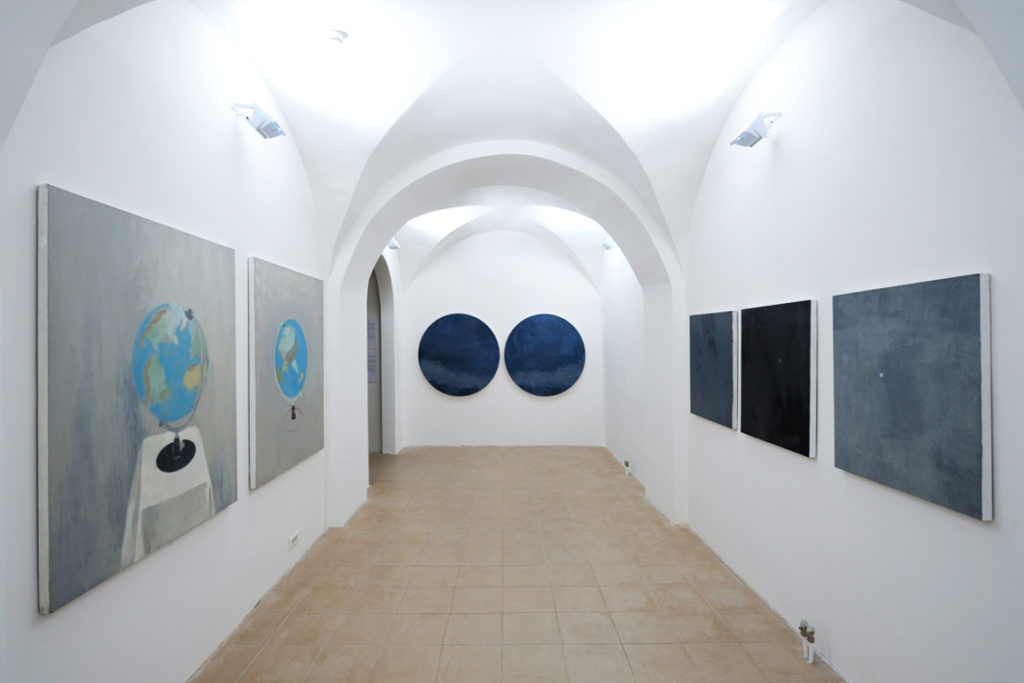
Moscow Museum of Modern Art specializes in the modern art of 20th and 21st centuries. The famous Russian artist and sculptor Zurab Tsereteli has founded it. The museum is located in four historic buildings in Petrovka Street, Gogolevsky Boulevard, Ermolaevsky lane and Tverskoy Boulevard. The museum’s collection depicts the development of avant-garde. The largest part of the collection consists of masterpieces of Russian artists, but you can also find works by Anri Russo, Joan Miro, Pablo Picasso and many others.
Site: http://www.mmoma.ru/
The Moscow Planetarium

The Planetarium in Moscow first opened its doors in 1929. After a global reconstruction, it was reopened in 2011. Now it is a multifunctional complex that combines scientific and educational resources: the interactive museum «Lunarium», the Museum of Urania, the Big Star Hall and the Sky Park, family recreation center, that focuses on different age groups. The Moscow Planetarium is one of the biggest planetariums in the world.
Site: http://www.planetarium-moscow.ru/
Moscow Galleries
Garage museum of contemporary art.
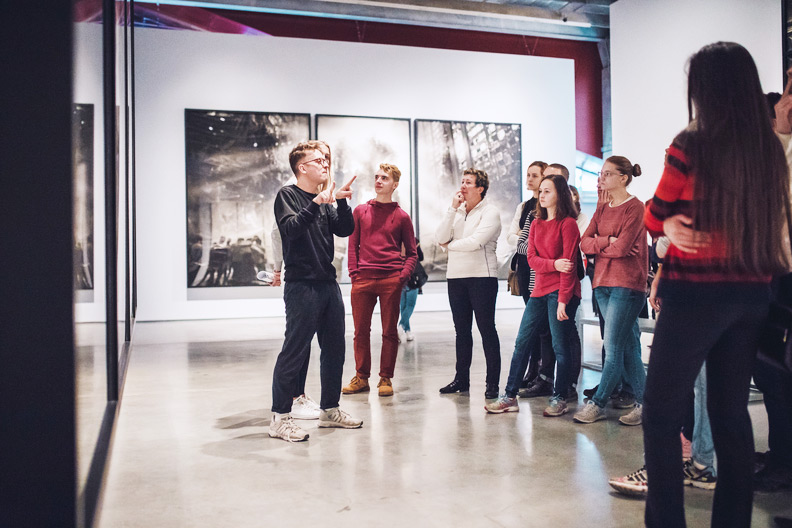
Exhibit on display during the opening of «Art Experiment»
The museum is a kind of independent platform aimed to disclose and reveal a new way of thinking. The Garage Center currently reflects the contemporary innovations of national and world’s culture. It invites you to the beautiful world of modern art, showing its best pieces. This center offers a great number of various exhibitions, educational projects for kids and adults, and publishing. The Garage Center is also called The Museum of Everything. It provides ways and reasons for public dialogue and the creation of progressive ideas.
Site: http://garageccc.com/
The Multimedia Art Museum

Fifty Years of Bond Style Exhibition
The Multimedia Art Museum opened in October 2010 at the base of the Moscow House of Photography. One of the main principles of MAMM s work is complete openness to the new forms of visual expression and for the fresh, innovative trends in the Russian and foreign media art and photography. There are seven floors of spacious exhibition halls and minimalist architecture that is a great font for modern art. The exhibition history of MAMM and Moscow House of Photography counts more than 1300 exhibitions in Russia and abroad. Moreover, Multimedia Art Museum has different educational programs and holds famous Moscow art festivals: Photobiennale, «Fashion and Style in Photography» and others.
Site: http://www.mamm-mdf.ru/
Lumiere Brothers Photography Center

This modern photo gallery is located in the very heart of Moscow, next to the Kremlin, Cathedral of Christ the Savior, big art galleries, design studios famous clubs and restaurants. The photography Center houses in an old and huge mansion at the Moskva River Embankment. Lumiere Brothers Photography Center has three huge exhibition rooms, lecture hall, library with an immense collection of rare books in photography and an independent bookshop. The Center is conducting research work, organizing educational projects, providing a base for the future Russian Museum of Photography.
Site: http://www.lumiere.ru/

Winzavod (Wine Factory) is the first and the biggest Center of Contemporary Art in our country. It unites all the areas of modern culture: exhibitions, festivals, lecture programs, cinema, concerts, theater premieres. You will find here a big amount of art galleries, artists’ workshops, designers and photographers studios, art cafes, fashion showrooms, a bookshop, children’s studio and many other things. The purpose of Winzavod is to support and to develop Russian contemporary art, art initiatives and help talented young people. Visiting Winzavod you will see the art that defines not only today’s but also tomorrow’s life.
Site: http://www.winzavod.ru/

The Manezh was built in 1817 in honor of the 5th anniversary of Russia’s victory in the 1812 war. Then it was called «Exerzierhaus», building, intended for military drills. The building has the unique construction – wooden structure trusses overlap the space of 44.86 square meters without any intermediate supports. After 1917, Manezh served as a garage for government vehicles. And since 1957 it has been continuously used for exhibitions and public events. In 2004, the building was severely damaged by fire. Renovated in 2005 the Manezh doubled its area. Nowadays it is one of the leading Moscow exhibition halls. There are two exhibition spaces, a conference room and a cafe on the third-floor observation deck. The Manezh hosts numerous fairs, festivals, and exhibitions.
Site: http://moscowmanege.ru/
Flacon Design Factory

Flacon Design Factory, located in the territory of a former glass factory, has become a pioneer in the revitalization of industrial zone outside the historic center of Moscow. Flacon has become a powerful launch pad for multiple cool projects, self-expression of creative individuals and carrying-out of sociocultural initiatives. No wonder that the atmosphere at Flacon entirely coincides with its motto: «Create as you please!» The Factory includes offices, co-working zone, shops, workshops, exhibition and creative projects spaces. Lectures, film screenings, fairs, design festivals, innovative exhibitions, presentations, concerts, limited actions and design community work days pass here weekly.
Site: http://flacon.ru/

Artplay is near Winzavod in the former industrial space in the area Kurskaya metro station and occupies an area of 75,000 square meters. Artplay, providing a new life to carefully reconstructed factory buildings, has become an important part of the contemporary cultural landscape of the city. Artplay unites designers, architects, furniture, lighting, ceramics, decorative materials shops, involving them in cooperation with each other. Young Moscow galleries, artists’ studios, cafes, bars, bookstores, music club, school of design, theater, children’s art studio are also situated here. Three exhibition halls regularly host contemporary art exhibitions, festivals, video art, alternative music concerts, performances, film screenings, lectures and master classes.
Site: http://www.artplay.ru/
CCI Fabrika

The Center For Creative Industries «Fabrika» is an art space for non-commercial creative projects. Today it is the example of peaceful coexistence of art business, operating enterprise, production, and workplaces for talented people in Moscow. CCI Fabrika is a member of the international network of non-profit cultural centers – Trans Europe Halls. This project is a typical umbrella-center. It is developing in both ways: creating and exhibiting its cultural projects and offering workspaces for other creative groups. Here you can find art studios and workshops of design, architecture, cinema, theater, cartoon animation and contemporary music studios.
Site: http://www.proektfabrika.ru/
Moscow Museum-Reserves
Tsaritsyno State Museum-Reserve

Tsaritsyno State Museum-Reserve is one of the largest historical, cultural, recreation and touristic complexes. Its total area is more than 700 hectares. It is an excellent combination of nature – marvelous rivers, ponds, streams, forests – and scientifically restored and renovated architectural and landscape monuments. The museum’s collection of historical items, exhibitions, and educational programs will be attractive for both national visitors and foreign tourists.
Site: http://www.tsaritsyno-museum.ru/
Arkhangelskoye Country Estate

Russian cultural monument is a good sublimation of the stunning beauty of a green space and luxurious collection of paintings, sculptures, unique books and pieces arts and crafts. During its long history, the estate was used as a recreation place for emperors, politicians, famous writers and poets. Today it is the finest place to have an enjoyable walk and to see the richest collection Russian art.
Site: http://www.arhangelskoe.su/
Kolomenskoe Museum-Reserve

A unique historic place – Kolomenskoe – is situated in the picturesque surrounding over the Moscow River banks. A magnificent country estate has appeared at the lands full of legends. Archeological discoveries state that the first settlements appeared here in the VIII century. It is an ancient and uniquely formed place. Today this is a unique complex of cultural monuments of high historical value.
Site: http://mgomz.ru/kolomenskoe
Sergiev-Posad City

Sergiev Posad Museum-Reserve
Museum of Sergiev-Posad is a historical and art reserve. It is located within the unique wall of the St. Sergius Trinity Lavra. This ancient monastery gathered its treasures during centuries from the tsars, princes and boyars donations. Moreover, many art and craft items were made at Lavra’s workshops. Now, the collections of Sergiev-Posad Museum-Reserve include rare, ancient icons, Cyrillic alphabet books, medieval manuscripts, visual art items, gold and silver showpieces.
Site: http://www.stsl.ru/
PLAN YOUR TRIP WITH US

Happy to help you with everything, from general plan of your visit to plane tickets or hotel stay. We may also support your Russian Visa request with a letter of invitation if you need so.
SEE OUR TOURS

We host around 60 tours every month in English, Russian, German, Italian, Spanish, Arabic and other languages. All of our tours =>
SAVE THIS LINK

If you only started to think about visiting Moscow, just save our site in your browser’s bookmarks or follow us on Facebook and Instagram to be in touch.
Our Private Tours in Moscow
Moscow art & design private tour, soviet moscow historical & heritage private tour, gastronomic moscow private tour, «day two» moscow private tour, layover in moscow tailor-made private tour, whole day in moscow private tour, all-in-one moscow essential private tour, moscow metro & stalin skyscrapers private tour, tour guide jobs →.
Every year we host more and more private tours in English, Russian and other languages for travelers from all over the world. They need best service, amazing stories and deep history knowledge. If you want to become our guide, please write us.
Contact Info
+7 495 166-72-69
119019 Moscow, Russia, Filippovskiy per. 7, 1
Mon - Sun 10.00 - 18.00
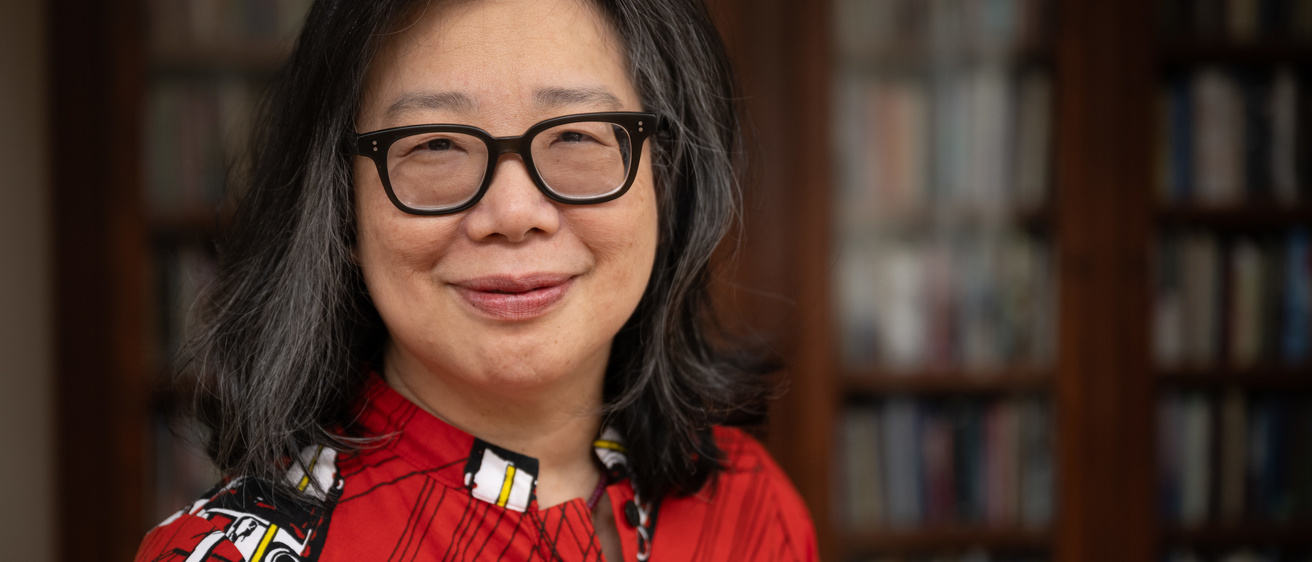
Chang proud to be part of Iowa’s writing legacy
Iowa Writers’ Workshop Director Lan Samantha Chang will have a lot to celebrate next month.
Chang, who also is a Writers’ Workshop alumna, is one of eight individuals who received an Arts and Letters Award from the American Academy of Arts and Letters, an achievement that will be celebrated at a ceremony in New York City in late May. But before the ceremony, she will head to New Hampshire to begin a residency as one of the most recent MacDowell Fellows.
“I’m really proud to be part of the Workshop,” she says. “I’m proud to be among the many Workshop graduates who have been honored this year by so many institutions.”
In addition to Chang, two Writers’ Workshop alumnae, Michelle Huneven and Elizabeth McCracken, also received Arts and Letters Awards. Awardees are given $10,000 to honor and encourage their creative work.
“For me, it’s a tremendous honor to be granted one of those prizes, because it’s a sign of confidence from the American writing establishment,” Chang says. “I spend a lot of my job trying to encourage people’s creative work, and there’s something kind of wonderful being on the receiving end of encouragement at this point. I feel lucky at this time in my life to have that encouragement to produce more work.”
Chang also is among the 155 artists—including writers, composers, architects, and filmmakers—selected from a pool of 2,417 applications for the spring-summer 2024 fellowship at MacDowell, one of the nation’s leading contemporary arts organizations. Fellows will have residencies at the MacDowell campus in Peterborough, New Hampshire, where they will have time and space to create in more than 30 artists’ studios.
“Because my job at Iowa is time-consuming and absorbing, it has been essential for me to go to residencies in order to get writing done,” Chang says. “I can say I’ve always done a lot of strong work at MacDowell. They make it possible for people to focus in a way that is unusual, even for a residency. For example, in the studios, Wi-Fi is not available. The story everyone says is, ‘Being there for a month, you get six months’ worth of work done.’ So, I’m extremely grateful to MacDowell. I’ll be starting something brand new, which is exciting.”
Chang’s previous work includes a collection of short stories, Hunger , and three novels: Inheritance ; All Is Forgotten, Nothing is Lost ; and The Family Chao . She has received creative writing fellowships from Stanford University, Princeton University, Radcliffe Institute for Advanced Study, the Guggenheim Foundation, and the National Endowment for the Arts.
Chang has directed the Iowa Writers’ Workshop since January 2006, and says she came to Iowa because the workshop changed her life.
“I felt that I could be a part of it in a meaningful way,” Chang says. “I’ve been very lucky that my job has been at a place that means a lot to me. I think it’s very rare and lucky when a person can spend so much of their adult life doing work that they find meaningful.”
Chang also finds inspiration in the students who come to Iowa for the workshop, which is known worldwide as the premier program of its kind.
“They are the best students in the world,” she says. “To have such a high concentration of gifted emerging writers is a very rare thing. I don’t know of anywhere else where it exists, the size and talent of the Workshop student body.”
Chang says she also thinks the university and Iowa City communities are unique in the value placed on writing.
“This is one of the few places in the country where writing is at the center of the conversation,” she says. “There’s something affirming to be able to walk into a restaurant and be in a room with poets and essayists and novelists, all those people living the lives of writers.”
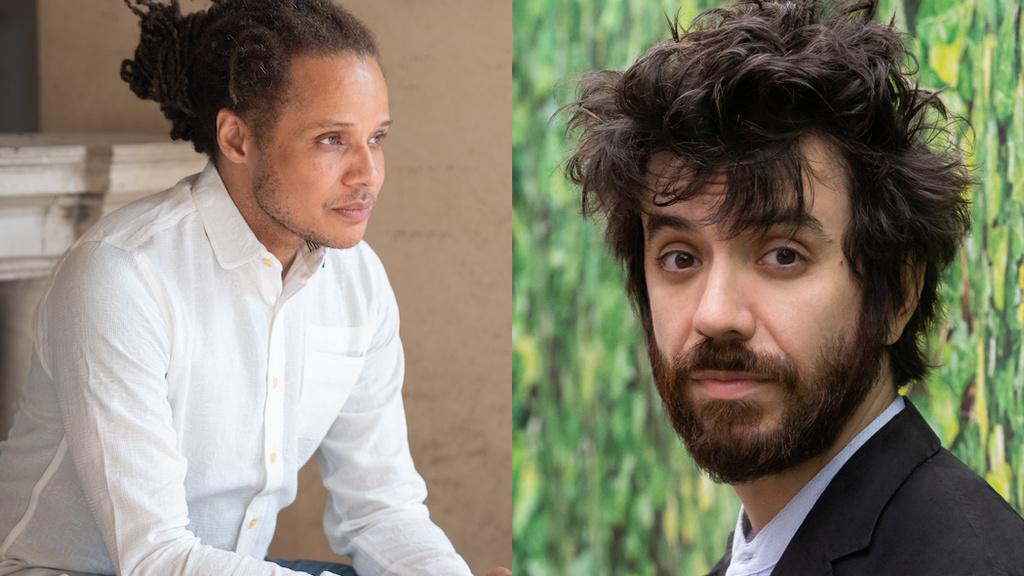
2 UI faculty receive prestigious Guggenheim Fellowship
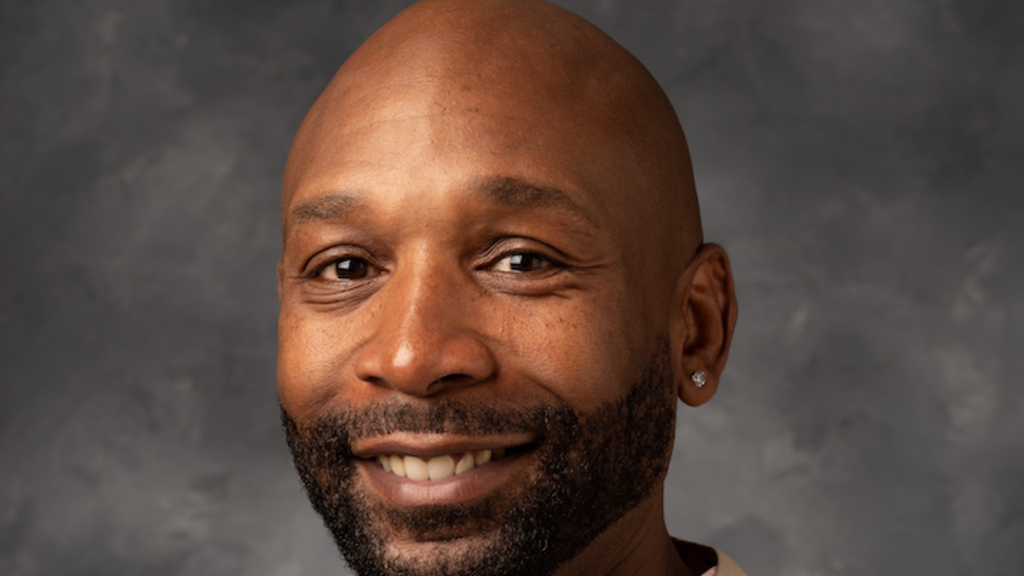
CLAS doctoral candidate receives prestigious Mellon/ACLS Fellowship
From writing to roleplays: ASU grad shares her experiences as a student, worker and creative force on campus
Editor’s note: This story is part of a series of profiles of notable spring 2024 graduates .
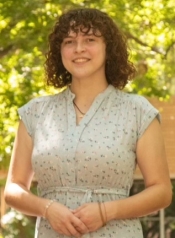
Grace Peserik, a writer for ASU Student Life and a communications aide for the School of Politics and Global Studies , spends her time outside of work writing fiction and playing tabletop roleplay games.
Now, as she prepares for graduation this spring, Peserik reflects on both her studies as an English literature major through The College of Liberal Arts and Sciences and her favorite memories as a Sun Devil at work.
The start of Peserik’s academic career at ASU was rather untraditional. She started taking classes during the COVID-19 pandemic in fall 2020, which was a difficult adjustment compared to the normal trajectory from high school into college life.
“It made my first year of college feel like we were in a limbo state,” Peserik said. “It was very odd for me personally because it is much harder to meet people and make friends when you are essentially on lockdown in your dorm.”
Since the height of the pandemic, Peserik has adjusted and found friends and communities she can engage with on campus.
Work experiences on campus
Before taking on her dual communications positions for Arizona State University as a student employee, Peserik began as an office aide for the ASU School of Art . Throughout her professional work experience, Peserik has had a wide range of responsibilities that have helped prepare her for entering the job market post-graduation.
“A lot of these positions have taught me to be more willing to advocate for myself and to feel confident in the things I am doing,” Peserik said. “As a writer, it is really critical to have those good communication skills.”
Perserik first honed her prose as a creative writer, working through genres ranging from young adult to sci-fi and fantasy. During her time with ASU Student Life, she has worked closely with many Sun Devils to help tell their stories on and off campus.
“One of my favorite pieces I’ve written at ASU Student Life was about a roleplaying game through Solis Diaboli ,” Peserik said. “It was one of the first stories that I pitched, and it was a fun piece to write.”
When asked about the importance of her work at ASU Student Life, Peserik expressed a sincere appreciation for the stories she got to tell during her employment. One of the latest pieces she worked on was about the Special Supplemental Nutrition Program for Women, Infants and Children, also known as WIC.
“That one was a fairly big undertaking and took a lot of work to make happen,” Peserik said. “I am very proud that it's out there.”
Peserik enjoyed her time as a student employee at ASU and highly recommended it to other Sun Devils searching for reliable and adaptable employment.
“Student jobs are a great way to meet other people that aren’t necessarily in your major or academic program,” Peserik said. “Who doesn’t want to get a job that will also work around your school schedule?”
Life as an ASU student
One of Peserik’s favorite memories as an ASU student came about through a forensic anthropology class she took in her first year, a course she selected to fulfill her major’s science requirement. It taught her early on to explore the wide range of classes available at ASU, even if it isn’t one she would normally go for.
“I was told I needed to take a science class, and it was the only one that sounded particularly interesting to me,” Peserik said. “I learned so much about the human skeleton and the different ways to identify people based off their skeletal structure. You can tell what gender someone was assigned at birth from different aspects of their skull alone.”
During her time as a Sun Devil, Peserik has found hobbies outside of work and class, predominantly manifesting in her involvement with Solis Diaboli , the classical civilizations club at ASU alluded to above. She began her time with the club as a traditional member and eventually took on the role of president, having held office for close to two years.
“Solis Diaboli is essentially a bunch of people who enjoy Greco-Roman history getting together and playing games related to that,” Peserik said. “As president, I mostly planned our meetings and any of the fun events that we hosted.”
One of the events Peserik cherished during her time with Solis Diaboli was an escape room she helped build for their team. Peserik and others transformed a classroom into a wild, Greek mythology-themed space.
“The club members definitely made the escape room unsolvable,” Peserik said, reflecting on that night with a smile. “They broke more than one puzzle in trying to get out, but it was really fun, at the end of the day.”
Not only did Solis Diaboli give Peserik a community of friends on campus, but it also connected her to her long-term boyfriend.
“Not to sound mushy, but one of my favorite memories as a student has to be meeting my boyfriend here,” Peserik said. “I technically met him through Solis Diaboli, but I didn’t acknowledge him fully until we had a class together. From then on, he and I became very close friends and then ended up dating.”
In Peserik’s own words, all of her creative work also ties back to tabletop roleplay games, a hobby that she and her friends can join together in, suspending belief and relishing in a uniquely innovative atmosphere. Peserik gets to not only play these games, but she also takes on the role of writer from time to time, developing the plots and settings her friends then get to explore.
“I’m excited for this upcoming game we’re starting up,” Peserik said. “I’m writing a very weird Star Wars-esque story and making my friends play it. Our first session is next weekend.”
After her graduation this spring, Peserik is looking forward to pursuing a career that involves writing, such as content writing or running social media accounts for large companies. Her dream job is to one day write fiction full-time.
To find Peserik’s work for ASU Student Life, read more of our student stories here.
More Sun Devil community
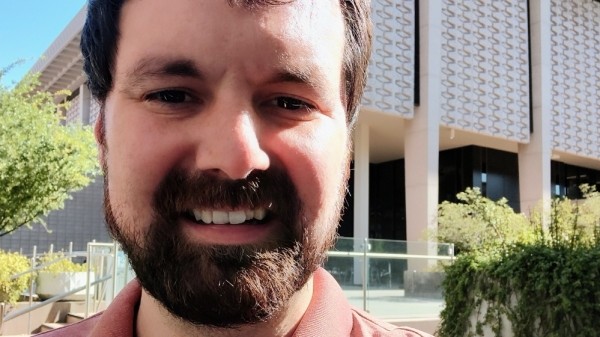
ASU linguist is outstanding humanities grad
Editor’s note: This story is part of a series of profiles of notable spring 2024 graduates. You can take a guy out of the South, but can you get rid of his accent? And does it matter? These…
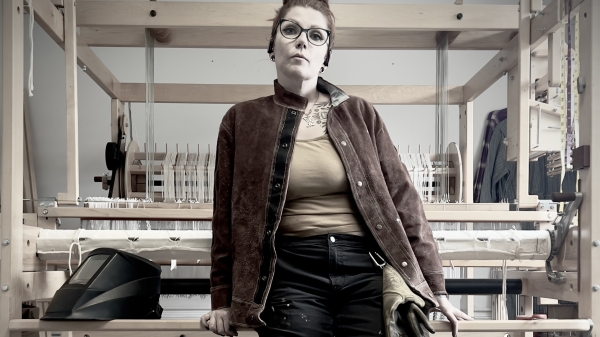
Art history graduate student: ‘Here at ASU, I learned just how capable I am’
Editor’s note: This story is part of a series of profiles of notable spring 2024 graduates. Sarah “Gigi” Brazeal never thought she would get a college degree from a four-year university. “Higher…
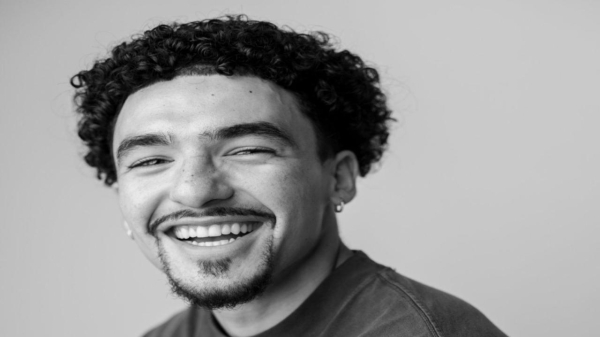
Journalism grad merges photojournalism with sustainability, design
By Lauren Boykins Editor’s note: This story is part of a series of profiles of notable spring 2024 graduates. Donovan Johnson carries a passion for photography, sustainability and design. That…
Two HFA Students Awarded Five College Prose and Poetry Prize for Creative Writing

UMass Amherst undergraduate students Andrea Peter ’25, a comparative literature major, and Livvy Krakower ’24, an English major, were among the 2024 Five College Prose and Poetry Prize recipients honored at a reading and reception April 18 in Hampshire College's Harold F. Johnson Library.
Celebrating creative writing of all genres, the Five College Prose and Poetry Prize, formerly PoetryFest, was reinstated in 2023 after a hiatus due to the pandemic. The contest received 150 total submissions from students representing UMass Amherst, Amherst, Hampshire, Mount Holyoke and Smith colleges, and The Care Center of Holyoke this year.
“For me the most amazing thing about the Five College Poetry and Prose competition is to meet fellow writers from other institutions,” says Krakower, a winner for prose who also won the prize in 2023. “Each college in the consortium is so unique and I am thankful that I have been able to hear pieces I would never hear if not for the competition.”
Peter won a poetry prize in the competition.
“Thanks to Five Colleges, Inc., and our English departments for supporting this work,” says Donna LeCourt, chair of the UMass Amherst English department. “Prizes to undergraduates are important and help to build their reputations in literary and professional communities. The opportunity for our graduate students to judge and manage literary awards provides exceptional professional development and helps distinguish them as creative leaders. I’m happy to see this prize come back to the Five College community.”
“I had a wonderful time judging the prose prize,” says 2024 prose judge and UMass Amherst MFA candidate Danielle Bradley, who was joined on the judging panel by fellow UMass Amherst MFA candidate and poet Ide Thompson ’24. “All of the submissions were impressive, and it was so special to hear many of the winners read their submissions at the reception.”
Global footer
- ©2024 University of Massachusetts Amherst
- Site policies
- Non-discrimination notice
- Accessibility
- Terms of use

IMAGES
VIDEO
COMMENTS
Step 1: find an artwork to inspire you. If you are a teacher, task students with finding an artwork that inspires them as a homework project in advance of the class. They could choose an artwork from a local collection or find one on Art UK. Use the tips below to find artworks on Art UK. Search by artist.
Explore your creativity and imagination with these writing prompts that use artworks from the museum's collection as inspiration. Try haiku, stream of consciousness, diary, round-robin story, movie pitch, and more.
Step 1: Observe. Asking students to look carefully and observe the image is fundamental to deep, thoughtful writing. Keep this in mind when choosing art to use in class. Look for images with: Many details: If it is a simple image, there's not much to analyze. Characters: There should be people or animals in the image to write about.
Write a short story on finding beauty in imperfection. Use three adjectives to define fine arts. Write a story revolving around the 10 th image saved on your phone. Write about silhouettes and the role they play in art. Write things you know about art history and distinguish it from contemporary art.
Learn how to use art as a source of inspiration and creativity for writing. Explore 6 art projects that combine drawing, painting, weaving, and poetry to enhance your students' writing skills and imagination.
Learn how to inspire thoughtful, creative writing through art by observing, interpreting, communicating, and creating. Find out the elements of creative writing and the benefits of using art as a source of inspiration.
The Program in Creative Writing offers Princeton undergraduates the opportunity to craft original work under the guidance of some of today's most respected practicing writers including Michael Dickman, Katie Farris, Aleksandar Hemon, A.M. Homes, Ilya Kaminsky, Christina Lazaridi, Yiyun Li, Paul Muldoon, Patricia Smith and Susan Wheeler.. Small workshop courses, averaging eight to ten ...
We're talking all things creative and reflective writing through art. As a museum educator, Mary Hall uses both theatre and creative writing to expand perspective, uncover complexity and deepen understanding. She is the founding instructor of National Gallery of Art's Writing Salon in Washington DC, and a six-summer faculty member of ...
descriptive, and thoughtful writing. In this tour, students explore the connections between art, imagination, and the written word. They discover how art can spark a writer's imagination and how em to better understand art. Students will look closely at works of art and then complete creative writing exercises using such
In summary, here are 10 of our most popular creative writing courses. Creative Writing: Wesleyan University. Write Your First Novel: Michigan State University. Good with Words: Writing and Editing: University of Michigan. The Strategy of Content Marketing: University of California, Davis. English Composition I: Duke University.
Writing Courses & Curriculum. The Bachelor of Fine Arts with an Emphasis in Writing (BFAW) program emphasizes a process-based approach to creative writing—one in which students experience writing across genres and in interdisciplinary and hybrid modes. Fully integrated into SAIC's studio departments, you will explore the relationship between language and visual art by connecting writing to ...
Outside the world of business writing and hard journalism lies an entire realm of creative writing. Whether you're brand-new to the craft, a nonfiction writer looking to experiment, or a casual creative writer wanting to turn into a published author, honing your creative writing skills is key to your success.
Home | Scholastic Art and Writing Awards. Awards Discover how entering the Scholastic Awards opens the door for recognition, scholarships, and more. Programs Exhibitions and workshop for teens, professional development for educators. Support Empower creative teens and elevate youth voices with your support. Scholastic Awards News.
WRITERS = ARTISTS USING WORDS TO CREATE. Our creative writers aren't writers who happen to go to an art school. They are artists who leverage written and spoken language to bring light and logical thinking to today's world. Our creative writing program helps students hone their craft, break through misconceptions, slice through society's ...
Embedding the development of an evolved practice of creative writing in a school of art and design, the Creative Writing program offers a unique opportunity to explore writing's relationship with contemporary art through interdisciplinary and hybridized forms. The major is centered around creative writing studio classes in a variety of genres ...
Creative Writing (BFA) On This Page. The Bachelor of Fine Arts program in Creative Writing (BFA) offers University of the Arts students a welcoming, community-based classroom setting in which they are able to hone their craft as writers. Our faculty includes highly respected working writers, including Rahul Mehta, Elise Juska, and Steven Kleinman.
The creative writing programs are among many art programs that aim to benefit prisoners during and after their time in prison. Programs such as these provide education, structure, and a creative outlet to encourage rehabilitation. These programs' continuation relies heavily on volunteers and outside financial support from sources such as ...
Sequence of Activities: Welcome and Introduction (10 minutes) The facilitator or teaching artist can introduce the session by expressing some of their own personal relationship to the arts. If you make art, share it! Expand your definition of art to include cooking, dancing, and any act of creativity. Bring something to share with students. Here is an example of something I might say at the ...
The National Endowment for the Arts Literature Fellowships program offers $25,000 grants in prose (fiction and creative nonfiction) and poetry to published creative writers that enable the recipients to set aside time for writing, research, travel, and general career advancement.. This program operates on a two-year cycle with fellowships in prose and poetry available in alternating years.
MASTER THE FUNDAMENTALS OF GREAT WRITING Thousands of books have been written on the subject of writing and how to do it better. Among them are a few select classics that reveal the essential elements of good storytelling. The Art of Creative Writing is such a classic. As in the bestselling The Art of Dramatic Writing, still considered one of the most essential books on playwriting more than ...
Almost all of CCCA student organizations and clubs are open to everyone. Writing Arts offers the following student groups: . Avant Literary Magazine is Rowan University's second oldest student organization, made by and for students, and dedicated to promoting student creative work.HerCampus Rowan is a national digital publication with a Rowan University branch, specializing in creative and ...
Creative Writing: "Writing the Killer Mystery," C1121, Central Carolina Community College, 2019. "Flash Fiction Made Easy," C1058, Central Carolina Community College, 2019.
Moscow Line Art Poster Print Russia No 1, Moscow Wall Art, Moscow Wall Decor, Moscow Travel, City Map, Fine Line Print, One Line Draw (43) $ 17.50. FREE shipping ... Etsy is the global marketplace for unique and creative goods. It's also home to a whole host of one-of-a-kind items made with love and extraordinary care. While many of the items ...
The Center For Creative Industries «Fabrika» is an art space for non-commercial creative projects. Today it is the example of peaceful coexistence of art business, operating enterprise, production, and workplaces for talented people in Moscow. CCI Fabrika is a member of the international network of non-profit cultural centers - Trans Europe ...
The online Master of Arts in English program at UWF is home to a vibrant community of scholars and creative writers who are passionate about the study of literature, discourse and print culture. ... In addition, for those interested in the creative writing concentration, submission of a creative writing sample (2500 words of fiction/non-fiction ...
She has received creative writing fellowships from Stanford University, Princeton University, Radcliffe Institute for Advanced Study, the Guggenheim Foundation, and the National Endowment for the Arts. Chang has directed the Iowa Writers' Workshop since January 2006, and says she came to Iowa because the workshop changed her life.
Grace Peserik. Grace Peserik, a writer for ASU Student Life and a communications aide for the School of Politics and Global Studies, spends her time outside of work writing fiction and playing tabletop roleplay games.. Now, as she prepares for graduation this spring, Peserik reflects on both her studies as an English literature major through The College of Liberal Arts and Sciences and her ...
The purpose of the Arts Commission is to enrich the community by celebrating and cultivating the expression of all forms of art and culture. Fulfillment of this purpose shall be based upon the following values: Recognition and promotion of artists' value by creating opportunities for work to be experienced. Facilitation and promotion of the ...
Each weekend about 200,000 people visit Moscow's Gorky Park. One warm June evening last year their number included the architect Rem Koolhaas, strolling in the tulip garden in the company of film director Woody Allen, art gallery owner Larry Gagosian, artist Jeff Koons, producer Harvey Weinstein and the art collector François Pinault.
Celebrating creative writing of all genres, the Five College Prose and Poetry Prize, formerly PoetryFest, was reinstated in 2023 after a hiatus due to the pandemic. The contest received 150 total submissions from students representing UMass Amherst, Amherst, Hampshire, Mount Holyoke and Smith colleges, and The Care Center of Holyoke this year.